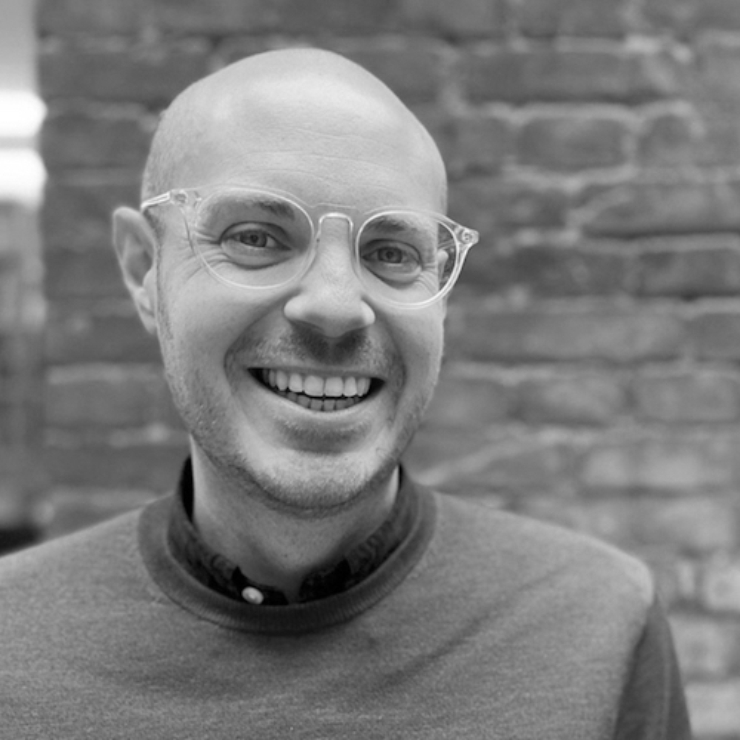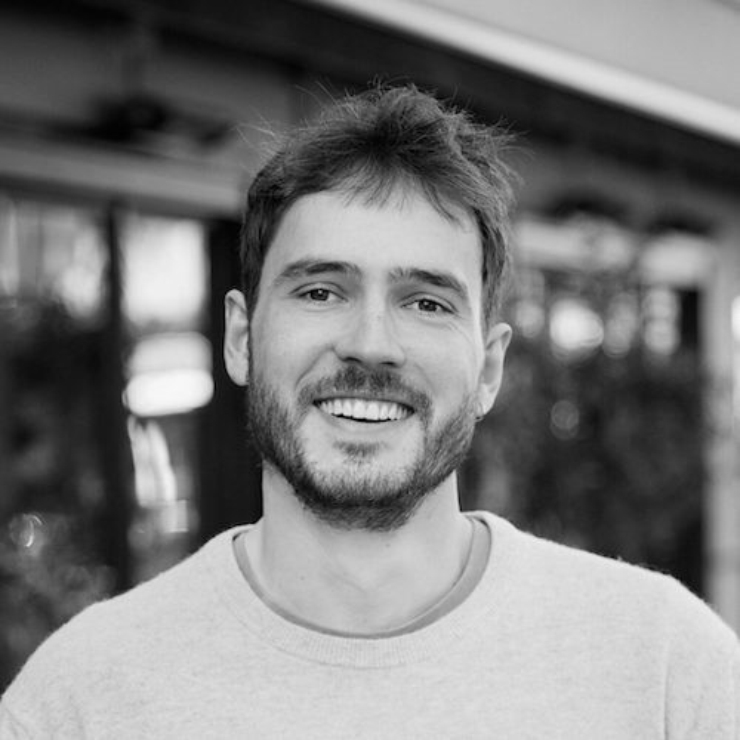Six ways to democratise city planning - Enabling thriving and healthy cities
The future of the cities we inhabit and where we spend our daily lives matters to all of us in very tangible ways. This future is also collective. We share the spaces we call home with numerous beings. Balancing a diversity of people’s needs and preferences, concerns for environmental and social justice, a flourishing living planet, sustainability and resilience, communities’ health and well-being, as well as a desire for beauty, joy, and belonging is no easy feat. So many of these things are interconnected and are directly and deeply impacted by urban planning and the multiple other decisions we take about our built environment.
Who makes these decisions, and how they are made matter greatly. We argue that the ‘who’ and the ‘how’ of urban planning decision making need to change. To live in thriving and healthy cities, we propose six possible ways to instigate systemic changes that can democratise the governance of urban planning decisions through Citizens’ Assemblies and connected participatory approaches.
To find out more, read the paper below!
DemocracyNext would like to thank the many people who have contributed their time and effort to the creation of the proposals in this paper. Thank you to the members of the International Task Force who have brought their wealth of expertise and experience to the development of this work, both online and in The Hague, The Netherlands.
The central tenets of the ideas proposed here were developed together with DemocracyNext’s International Task Force on Democratising City Planning and DemocracyNext colleagues from 10-13 September 2023 involving:
The preliminary thinking was also shaped by two earlier virtual convenings which included other Members of the DemocracyNext International Task Force including:
Thank you to our funders, The National Endowment for Democracy, Open Society Foundations, and the Rockefeller Foundation, for supporting this work.
We would like to thank Adèle Vivet for the beautiful illustrations and Mona Ebdrup for the conceptual schematic drawing found in section 3.3. Icons found in Assembly diagrams made by Freepik, juicy_fish, Uniconlabs, surang, Icongeek26 - from www.flaticon.com
The terms Citizens’ Assembly, sortition, deliberation, and citizen appear regularly throughout this proposal and are key to its understanding.
A Citizens’ Assembly is a group of people who are selected through sortition to be broadly representative of a community. They are convened with the aim of making shared, consensus-driven recommendations for decision makers through deliberation. Citizens’ Assemblies are sometimes called Citizens’ Juries, Panels, or Councils depending on their size and the country where they are taking place.
There are two main ingredients of a Citizens’ Assembly that differentiate it from other forms of participation and enable its effectiveness and legitimacy - these are sortition and deliberation.
 For more details on the technical and practical considerations for running a Citizens’ Assembly (including how many people to invite and select, an expected budget for running an Assembly, and other key elements) refer to our Assembling an Assembly Guide here.
For more details on the technical and practical considerations for running a Citizens’ Assembly (including how many people to invite and select, an expected budget for running an Assembly, and other key elements) refer to our Assembling an Assembly Guide here.
Sortition refers to a two-stage lottery selection process that brings together a broadly representative cross-section of society. In practice, this happens in two stages:
In the first stage, a large number of invitations (often between 10-30k) are sent out at random by the convening authority or organisation to people living in a city or a particular community. The invitation details why the Assembly is being convened, the issue to be addressed, how the process will work, how members will be compensated for their time and what resources are available to reduce barriers to participation (support for elder care, child care, translation during the deliberations etc), and what will happen as a result of their recommendations. People are invited to accept by confirming that they would like their name to be included in a second lottery process to choose the final group of Assembly Members.
Amongst everybody who responds positively to this first invitation, the second lottery takes place, this time with a process – known as stratification – to ensure that the final group broadly represents the community’s diversity in terms of gender, age, geography, and socio-economic differences, or other relevant criteria to the issue.
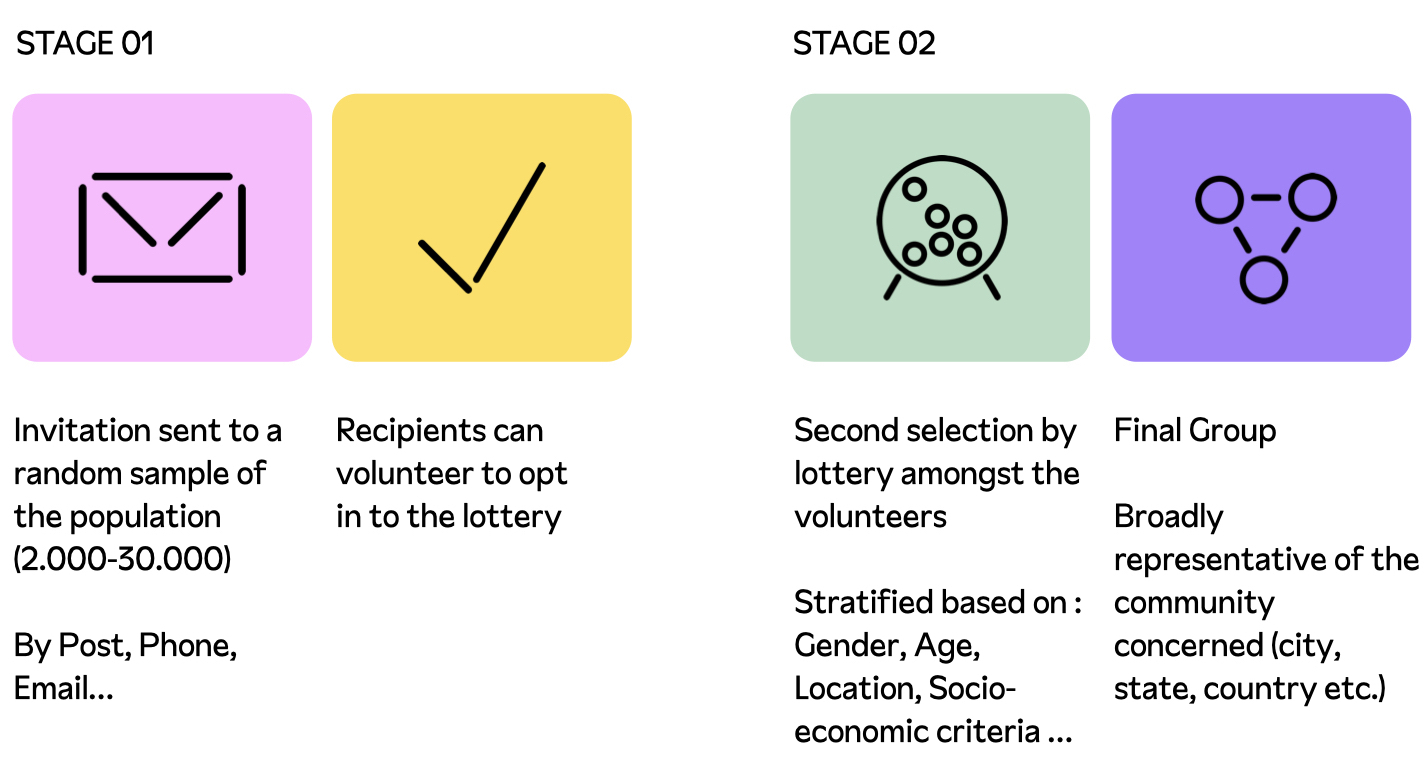
The principle of sortition means that everyone has an equal chance to represent their community as an Assembly Member, and to be represented in turn. It is a fair process for choosing a small group of people to be involved in shaping a collective decision. We cannot all be involved in every decision all the time, so there is a need for mechanisms that enable us to choose a sub-group who will dive deeply into an issue. Rotation means that the responsibility and privilege of being an Assembly Member is shared over time. It recognises that everybody has the dignity and capacity to be involved in shaping decisions affecting their lives. Bringing together a diversity of perspectives is also crucial for enabling collective intelligence to emerge.
Deliberation refers to weighing evidence and coming to a shared decision off the back of it. Deliberation creates the conditions to consider the complexity of the issue and to find common ground about how to tackle it. It can help unlock action where decision makers are stuck or may be facing resistance from a small portion of a community. In a Citizens’ Assembly, Members spend significant time listening, learning and collaborating through facilitated deliberation to find common ground (often 70-80% agreement) and form collective recommendations for policy makers, decision makers, and the community.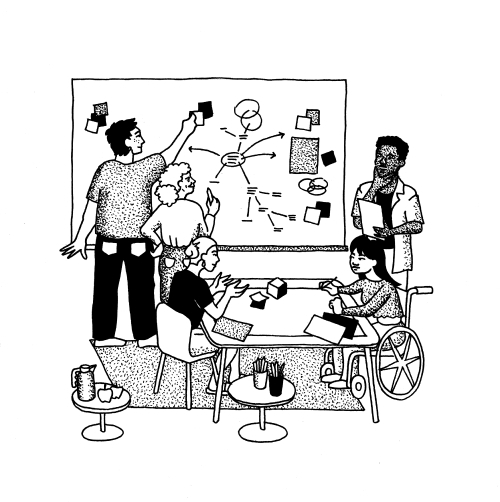
We use the word ‘citizen’ intentionally. We mean the term in the broadest sense of a person living in a particular place, which can be in reference to a village, town, city, region, state, or country depending on the context, rather than in the more restrictive sense of ‘a legally recognised national of a state’. In this document, we use the word ‘citizen’ interchangeably with ‘people’. We see citizenship as an active practice.
Specific details about how to reach people who may not have a fixed address can also be found in section 1.5 Before the Assembly and on p.19 of FIDE’s guide on organising a democratic lottery.
The global urban population is expected to more than double by 2050, with nearly seven in 10 people living in cities, meaning that more and more of us are directly impacted by the decisions made about our urban environments.
Around the world, urban areas are facing similar issues related to housing affordability, the widening gap of social and economic inequality, vulnerability to climate change, population increase, rapid urbanisation, and mobility challenges. These issues are pressing and complex, and will require the collective agency and intelligence of everybody to find better, more inclusive, paths forward. For this reason, we see a huge opportunity to re-consider how people living in urban areas can be empowered to shape the places they call home.
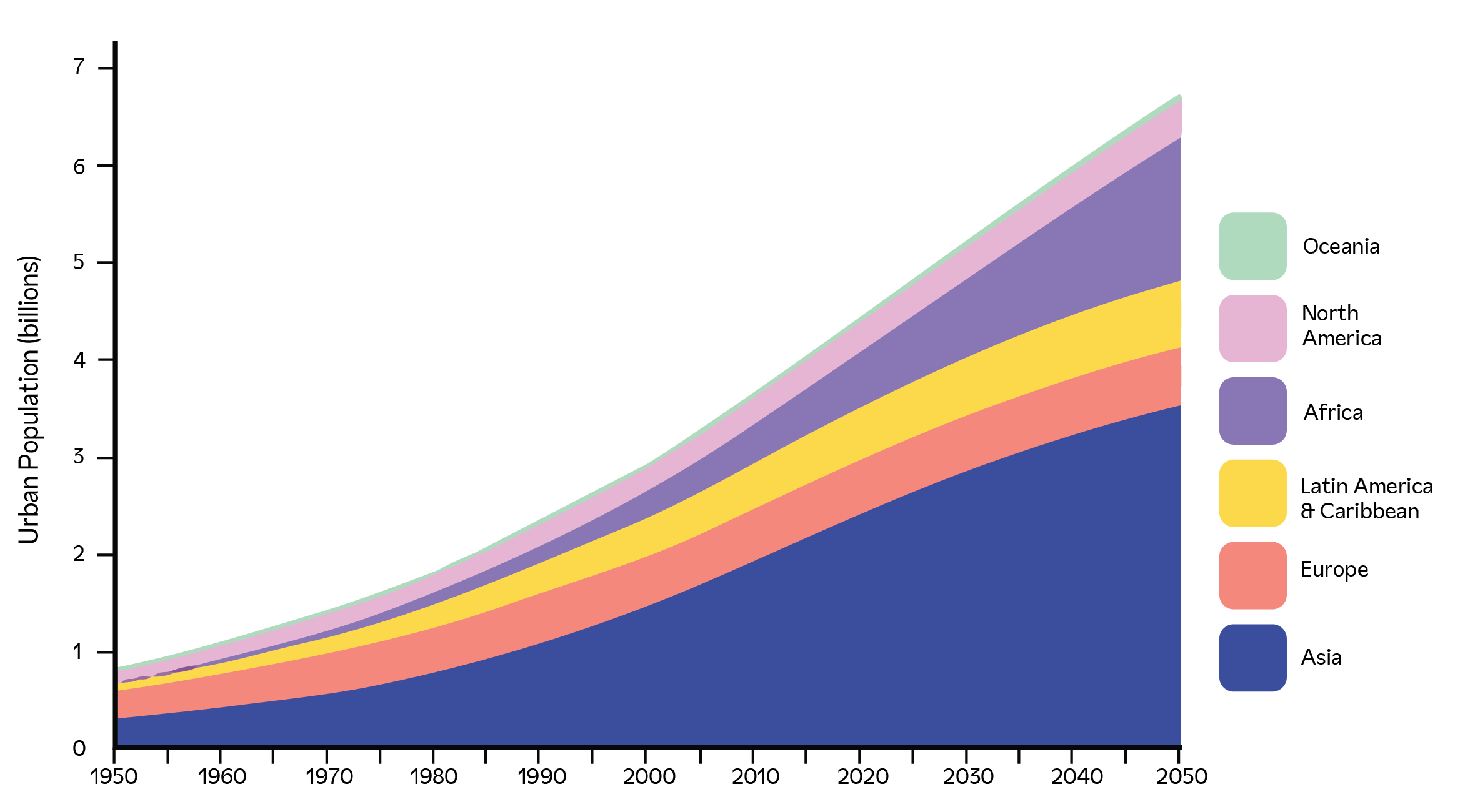
We convened an International Task Force on Democratising City Planning in recognition of these problems, and with a desire to propose systemic changes for addressing them. We began this work by having many conversations with city councillors, officials, planners, architects, developers, and citizens in different parts of the world. They shared a frustration with the current system of urban planning.
We are not denying that there are successful and inspiring examples of participation in urban planning; there are many people around the world who have championed meaningful and innovative approaches (we highlight some of these in the appendix). But what we notice is that this is not the status quo. When it happens, it often relies on the political will and imagination of those involved at one moment in time. It is not the way decisions are routinely taken.
With our International Task Force, we learned from many inspiring examples of participatory and deliberative processes around the globe (some of which are found in the Appendix). We then considered and explored how the system could change to make meaningful and informed public deliberation and participation, such as Citizens’ Assemblies, the norm in urban planning decision making..
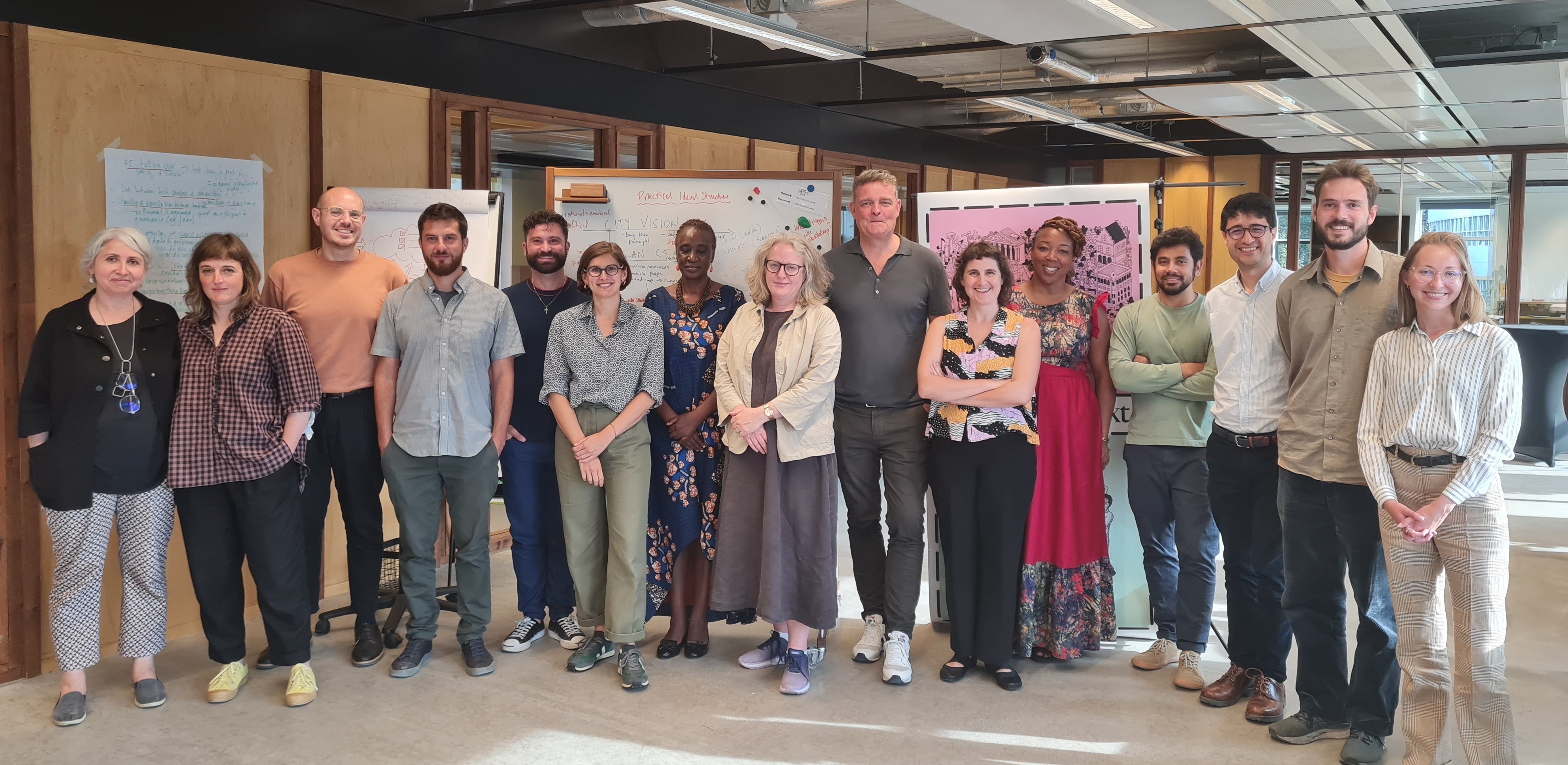
May-July 2023: During a first series of virtual meetings, we analysed the benefits and shortcomings of typical urban planning decision-making processes, common participatory practices, and the challenges facing decision makers, developers, urban planners, civil society organisations, and citizens. Between these first virtual meetings, DemocracyNext attended the Urban Future conference in Stuttgart, Germany. We led a deliberative session to explore these initial ideas with a group of randomly selected participants from the conference and their feedback was integrated into the draft proposal.
September 2023: After assessing the current landscape, we held an in-person convening at DemocracyNext’s new home at the Humanity Hub in The Hague to imagine what a more democratic city could look like and how it could be governed, followed by an iterative process of sketching out what new governance models could entail.
September-November 2023: In line with DemocracyNext’s values, we wanted this work to be rigorous and collaborative. We gathered feedback from a larger group of around 100 international stakeholders and experts. We convened them twice online and gathered written feedback on multiple draft versions of the document. In October and November 2023, we sought further feedback from experts from the fields of deliberative and participatory democracy at the Democracy R&D Conference in Copenhagen and the IOPD Conference in Rio de Janeiro.

The issues facing cities today are complex and demand solutions that draw upon the collective intelligence of society as a whole. Today, cities face a myriad of challenges and opportunities related to urban planning. For example:
We have found there is general agreement amongst different actors in the urban planning ecosystem – planners, architects, city government officials, mayors and elected councillors, investors, developers, civil society organisations, and citizens – that the current decision-making system is not equipped to tackle these challenges in a dynamic, effective, or inclusive way.
More than a one-off process - changing the rules of the game for better, ongoing decision-making
The challenges that cities face today are not only a result of the specific decisions made in recent decades, but also stem from the way in which these decisions have been made. We see a need to change how people are integrated into the process of urban planning to create better, bolder, consensus-driven solutions to the complex challenges outlined above, in a way that engenders much greater legitimacy. This demands a departure from the status quo.
For more effective and inclusive decision making that enables action and gives people agency to shape their cities into thriving and healthy places, people should be able to wield greater power in shaping those decisions in an ongoing way, not only by voicing their opinions in town hall meetings, or as part of formal or mandatory consultation processes.
This proposal is not simply about improving one-off participation processes, it is about enriching and expanding how we engage with people by creating a deeper culture of engagement that can enable the conditions for a systemic, structural shift. We see this as a fundamental way to transform who decides and how decisions are made.
These proposals are not simply about improving one-off participation processes, it is about enriching and expanding how we engage with people by creating a deeper culture of engagement that can enable the conditions for a systemic, structural shift. We see this as a fundamental way to transform who decides and how decisions are made.
We need both depth and breadth of citizen involvement, with a holistic ecosystem of deliberative and participatory institutions that are connected directly into the key moments of urban planning decision making.
Depth is needed because the decisions concerned are complex, involving many considerations and trade-offs. Many of the challenges outlined at the outset are interconnected, and there is a need to sit with that complexity rather than simplify it. It is why Citizens’ Assemblies are at the heart of the proposals outlined here – enabling a greater depth of citizen deliberation.
However, it’s necessary to connect Assembly processes with wider citizen participation to enable a breadth of community input. There are many innovative participation processes being tested internationally from which we can draw inspiration (see Appendix for examples). Directly connecting these with citizen deliberation in a systemic way presents a great opportunity to engage both deeply and broadly.
Working in tandem with broader participation processes, Citizens’ Assemblies can strengthen and help legitimise the breadth of inputs from the community. Some examples of these include community mapping, surveys, citizen science and data-gathering initiatives, design workshops, and other relevant forms of engagement that reach a wider breadth of participants. The outputs of these participation processes can be directly linked to Citizens’ Assemblies as a way to determine the question (the remit) of the Assembly or as a form of evidence or testimony for Members to form recommendations.
The three types of Citizens’ Assemblies are: city-wide, community, and ad-hoc. These Assemblies play a key role in an ecosystem of wider participation strategies that are connected to the public authority, their policy and and decision-making cycles, and key actors involved in urban planning decisions, including planners, developers and investors, civil society groups, architects, and researchers. In the following section, we provide greater detail about each type of Assembly, the supporting bodies and processes that facilitate a direct connection to the public authority.
Each part of this proposal is understood as one element in a wider ecosystem of actors, wider engagement processes, and key moments of decision-making - all of which come together to form an ecosystem. We see the different Assemblies connecting to each other, to the existing infrastructure of a city, and key people and organisations as fundamental to the cultivation of a more democratic, citizen-empowered culture of deliberation.
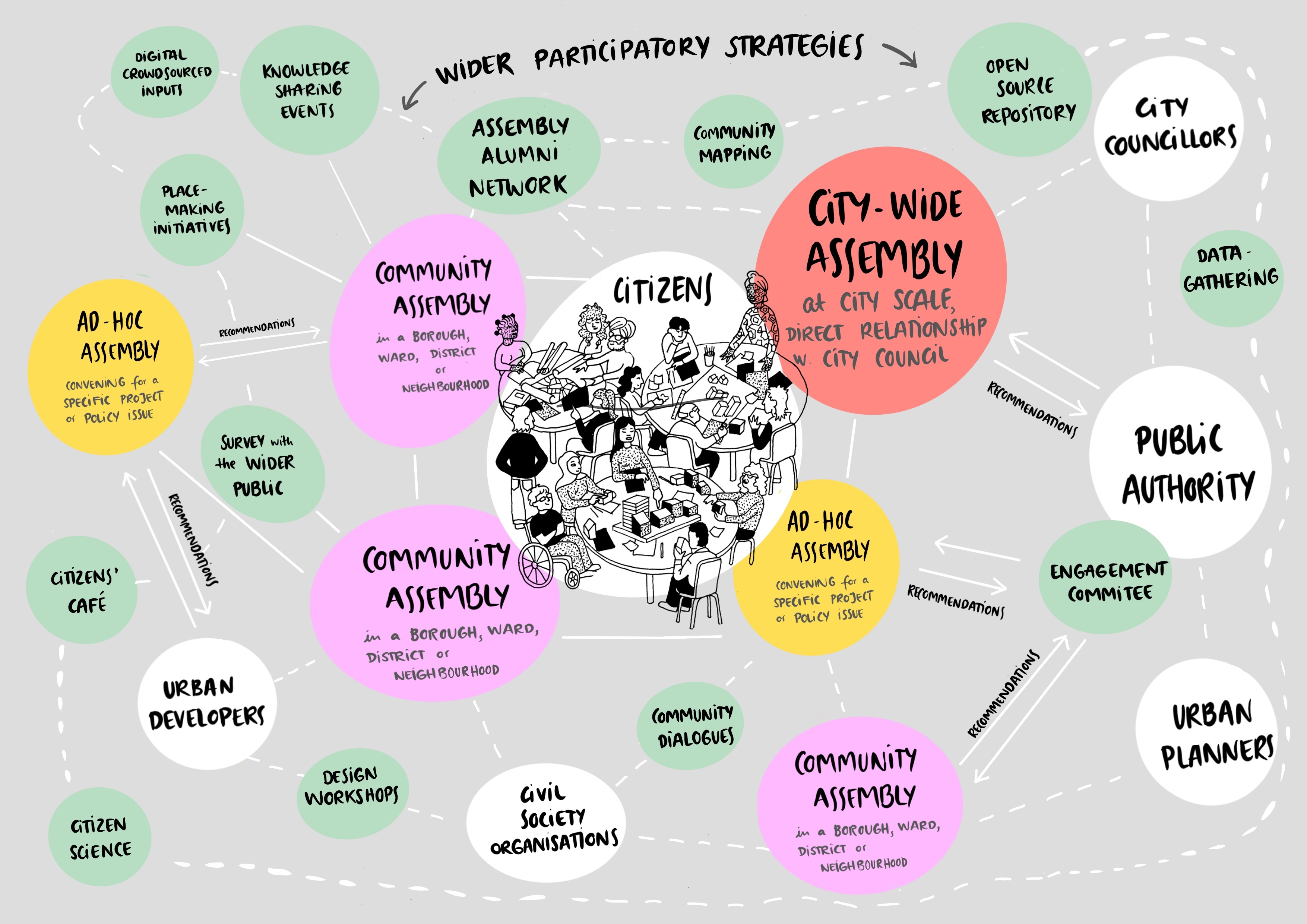
An outline of the six ways to democratise city planning is shown below, but we will go deeper into them in chapter 5. Depending on a city’s current starting point, at least one, if not multiple, of these options can be seen as an initial ‘way in’ to begin making systemic changes to urban planning decision making.
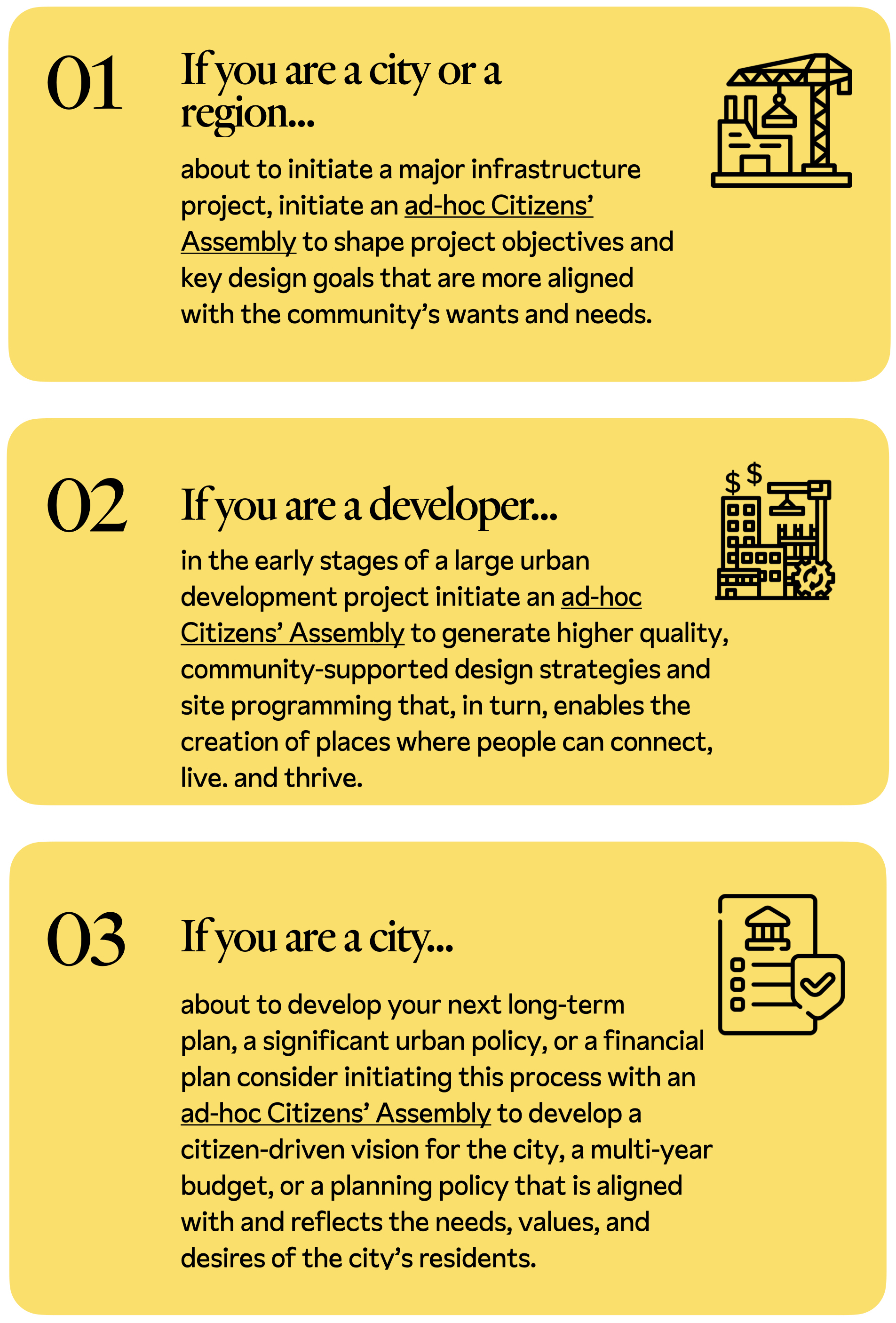
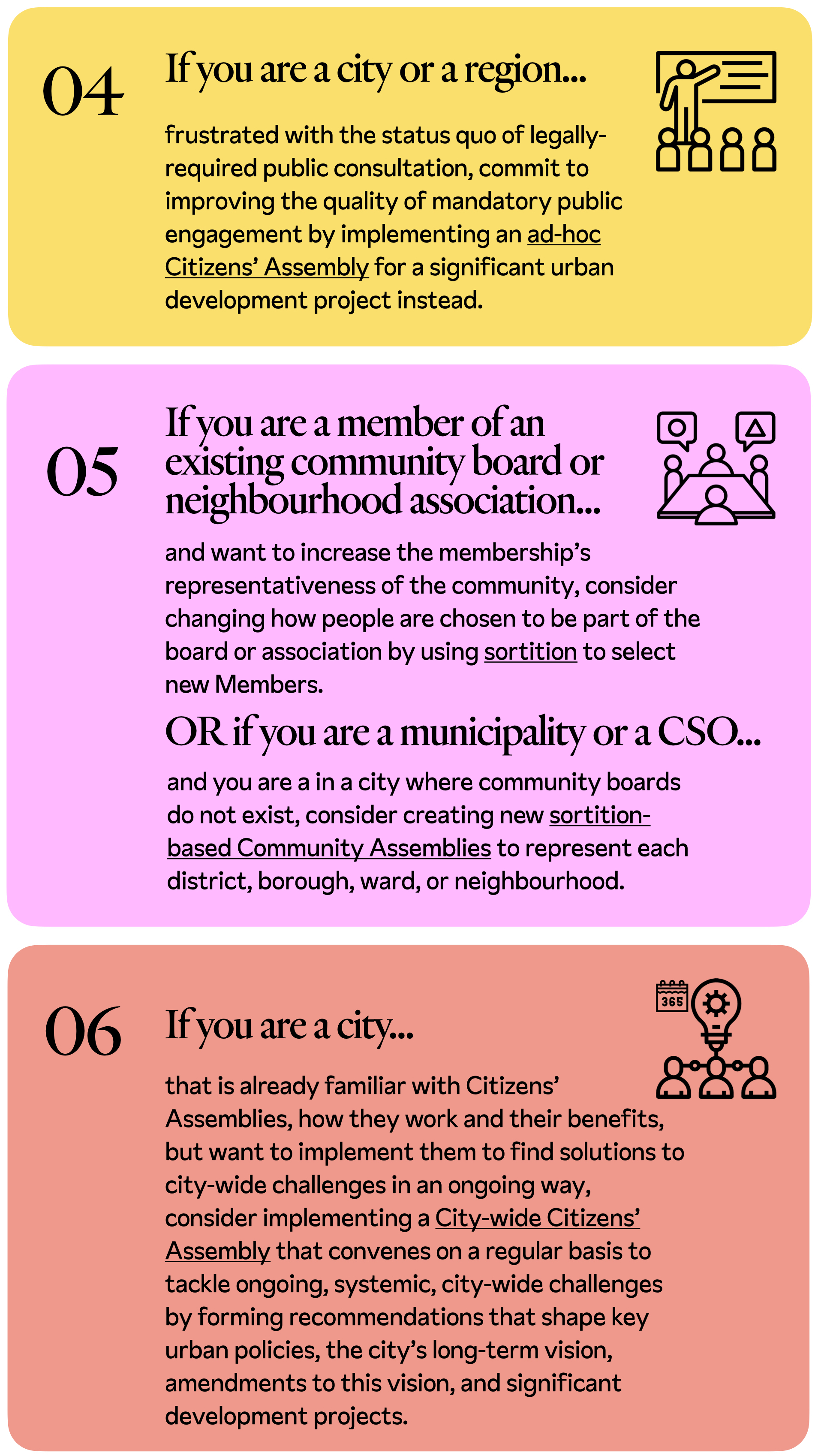
The three types of Citizens’ Assemblies include: a City-wide Assembly, Community Assemblies, and Ad-hoc Assemblies. How they can be implemented, either independently or concurrently, depends on a city’s size, its existing institutions, decision-making, and engagement processes, and the resources available for implementation. The characteristics outlined are guidelines for how these Assemblies could function. The details will depend on the context and should be designed with careful consideration. More information about how to design and run Citizens’ Assemblies are available in DemocracyNext’s Assembling an Assembly Guide.
This Assembly type functions at the scale of a borough, district, ward, or neighbourhood (naming convention will be dependent on city). These Members give regular input on projects, plans, and decision-making processes that impact their particular jurisdiction. This input is directly linked to key stages in the decision-making process with a commitment from the public authority to consider, respond to, and act on the recommendations.
Members are selected from the community through sortition. An option we suggest is to select 50% of the Members halfway through the Community Assembly’s term. For example, if the term is two years, then every year, 50% of the Assembly Members are replaced by new Members selected by sortition, so there is a rotation of opportunity and responsibility in the community. This helps to ensure that there is some balance between people who already hold a deeper understanding of the context and issues, with others who bring a fresh perspective.
In some cities, community-level councils or boards already exist. There are ‘Casa Somos’ in Quito, Ecuador, New York City’s Community Boards, Los Angeles’ Neighborhood Councils, and Helsinki’s Neighbourhoods Association, Helka. In such cases, there is an opportunity to transform how they operate, by introducing sortition into the selection process for all, or some, of their members. Many of these existing bodies have well-intentioned and engaged citizens, but are often unrepresentative of the communities they serve, exacerbating inequalities and amplifying power imbalances. Changing the selection mechanisms from either self-selection or elections to sortition would help to ensure a greater diversity of people have the chance to become Members.
In contexts where these boards or councils already exist, reforming to selection by sortition - a selection mechanism that engenders greater legitimacy - can open an discussion as to why these bodies should be granted greater responsibility and power to influence key decisions in the city. For example, they could deliberate and form recommendations on specific development proposals in their jurisdiction or choose priority areas for implementing city-wide urban policies and initiatives. They could also be allocated a specific budget for local projects and could initiate an ad-hoc Citizens’ Assembly related to a neighbourhood policy or project.
(exact characteristics will vary depending on context in which the Assembly is implemented)
If shifting to an entirely sortition-based system immediately is difficult for technical or political reasons, another option (as a way to transition to new ways of selecting Members by sortition) could be to begin by selecting 50% of an incoming cohort of Members with sortition and the other 50% with the existing selection mechanism (see diagram below). Over time, the group could become entirely selected by sortition.
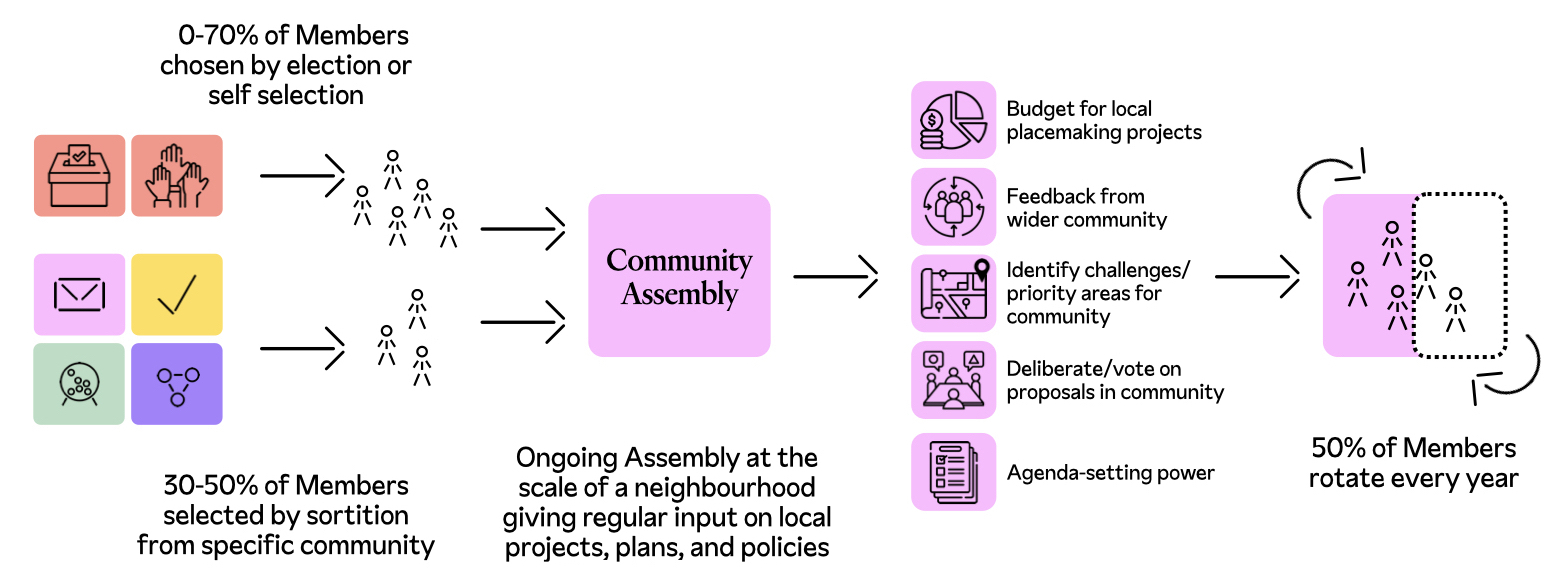
In contexts where these community bodies do not exist, we propose that they could be created, and could be solely formed of Members selected through sortition (see diagram below). They would also be granted the same responsibilities indicated above.

At the scale of the city, we propose a standing City-wide Citizens’ Assembly with rotating Members which gives regular input on longer-term and city-wide decisions. For example, this can include the city’s strategic (5-10 year) plan and amendments to / development of a significant piece of policy.
Some cities, such as Paris, have established permanent city-wide Assemblies with a general mandate, and other cities, such as Brussels and Milan, have established permanent Assemblies on Climate. Planning decisions often cut across various departments and are inter-connected with climate-related decisions as well. If a city prefers to put the emphasis on climate, or give the Assembly a more general mandate, where long-term and city-wide planning decisions are part of the wider remit, then these are also options that fit within the spirit of the proposals outlined here. What matters is the idea of anchoring an ongoing Assembly in a way that empowers it to set the agenda and to have a meaningful connection with the City Council on decision making.

(exact characteristics will vary depending on context in which the Assembly is implemented)
An ad-hoc Citizens’ Assembly is convened for a specific project or policy issue and can be initiated by either the City-wide Citizens’ Assembly on Planning, a Community Assembly, the City Council/Public Authority, a developer, or through a citizen-led petition with a minimum number of signatures.
Triggers that can initiate an ad-hoc Citizens’ Assembly can include:

(exact characteristics will vary depending on context in which the Assembly is implemented)
These Assemblies are supported by a designated engagement committee that helps to facilitate and ensure feedback loops, whilst ensuring accountability, and enabling continual knowledge exchange.
Engagement Committee
This Committee is formed of an independent group of civil servants from within the public authority (such as the engagement team in the planning department and/or the public engagement department) that acts as an impartial secretariat. A portion of the committee can also be made up by a small, randomly selected, group of Assembly Members. Their role is to manage and organise all of the various Assemblies - running the sortition processes, creating learning programs for the Assembly Members, running processes to select the information and choose experts and stakeholders that present to the Assembly, (all of which should be carried out in close partnership with local delivery organisations).
The engagement committee is also responsible for facilitating and maintaining an open line of communication with relevant decision-makers, city managers, and key city departments to ensure that recommendations are realistic, followed up and acted upon. They also manage the budgets and carry out the operational tasks for running the Assemblies.
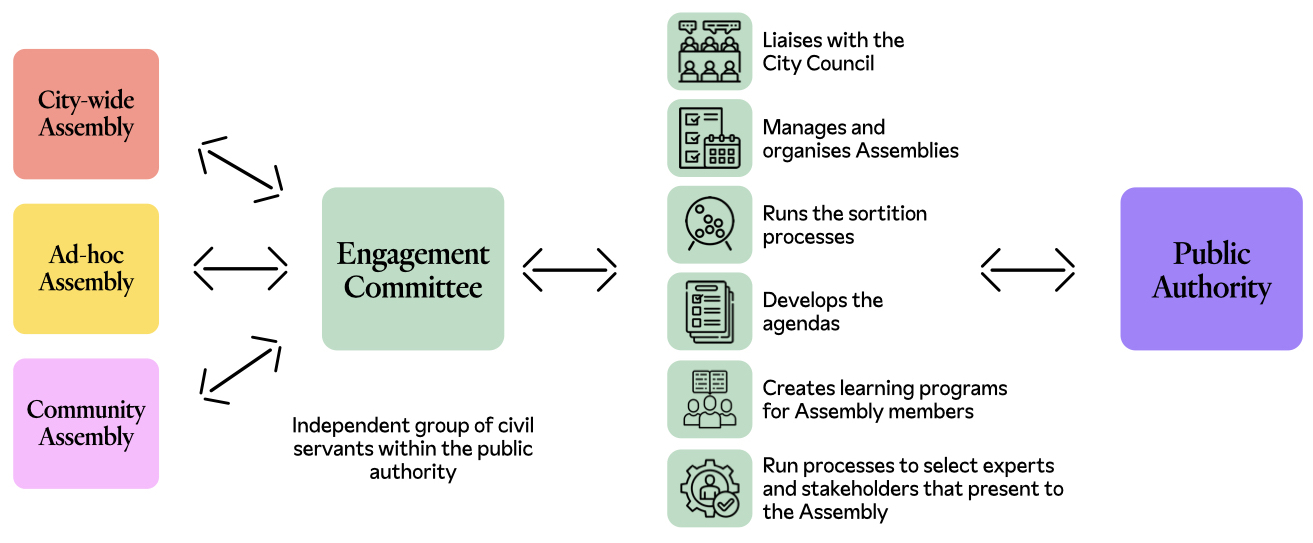
Delivery organisations are practitioners who have expert knowledge and experience in organising, facilitating, and implementing the Assembly process. Examples of delivery organisations from around the world include:
A longer list of organisations with expertise in Citizens’ Assemblies can be found on the Democracy R&D network website.
Of course, we recognise that not every country will have an organisation specifically experienced in delivering a Citizens’ Assembly. However, in many contexts there are often non-profit organisations and NGOs that have valuable experience in delivering participation processes which use similar techniques in facilitation. They can be trained in Assembly facilitation techniques and develop Assembly organisation and facilitation competencies.
Note: DemocracyNext will be launching a Citizens’ Assembly learning program for civil servants and practitioners in late 2024/early 2025. Please let us know if you are interested in participating and we will notify you when this becomes available.
To cultivate a network amongst Assembly Members (past and present) and to create opportunities for experimentation, learning, iterating, and knowledge sharing, we propose a series of different mechanisms to help build such a community of learning. This could include:
3.5 Connecting to decision-making processes
It is incredibly important that recommendations delivered by any of the Assemblies have an impact. The ability for Assemblies to weave into the decision-making processes that already exist in a city is crucial to their empowerment and the effectiveness of the solutions they propose. That said, this will vary in every city. We have proposed that an Engagement Committee can ensure an open line of communication between the Assembly and key actors, but there are two fundamental points that, if followed, can also help ensure accountability and that the Assembly process is well integrated. These include:
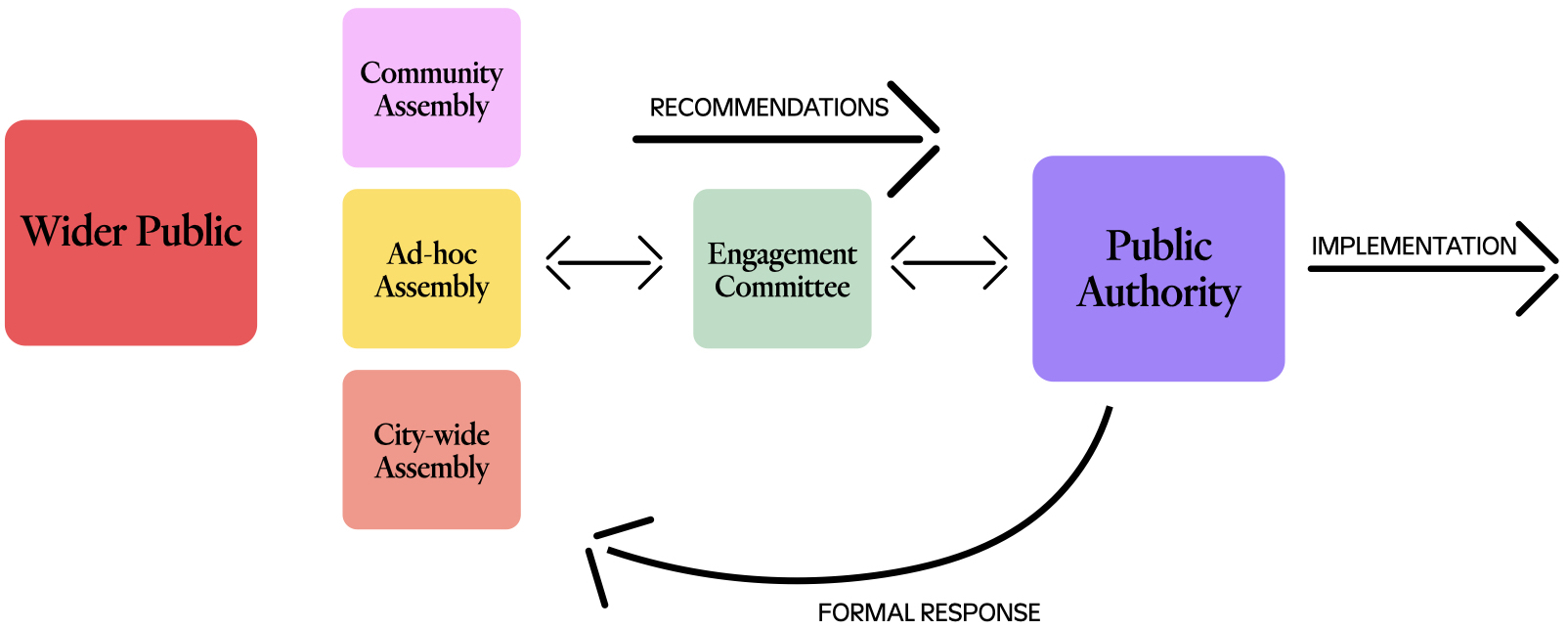
It is also important to consider how each Assembly type could plug into the specific timelines of the many city projects, plans, and policies happening at any given time. For example, at a national or regional scale, an Ad-hoc Assembly could be implemented to produce recommendations for new policies, or during a period when amendments to a particular piece of planning legislation, or a building code are being made.
A City-wide Assembly, on the other hand, could be convened to gather valuable input from citizens before a city drafts its long-term vision or a new transport plan.
At the scale of an individual development or community project, an Ad-hoc Assembly, or a Community Assembly, would be also useful for providing recommendations during the initial stages (and also throughout the development process).
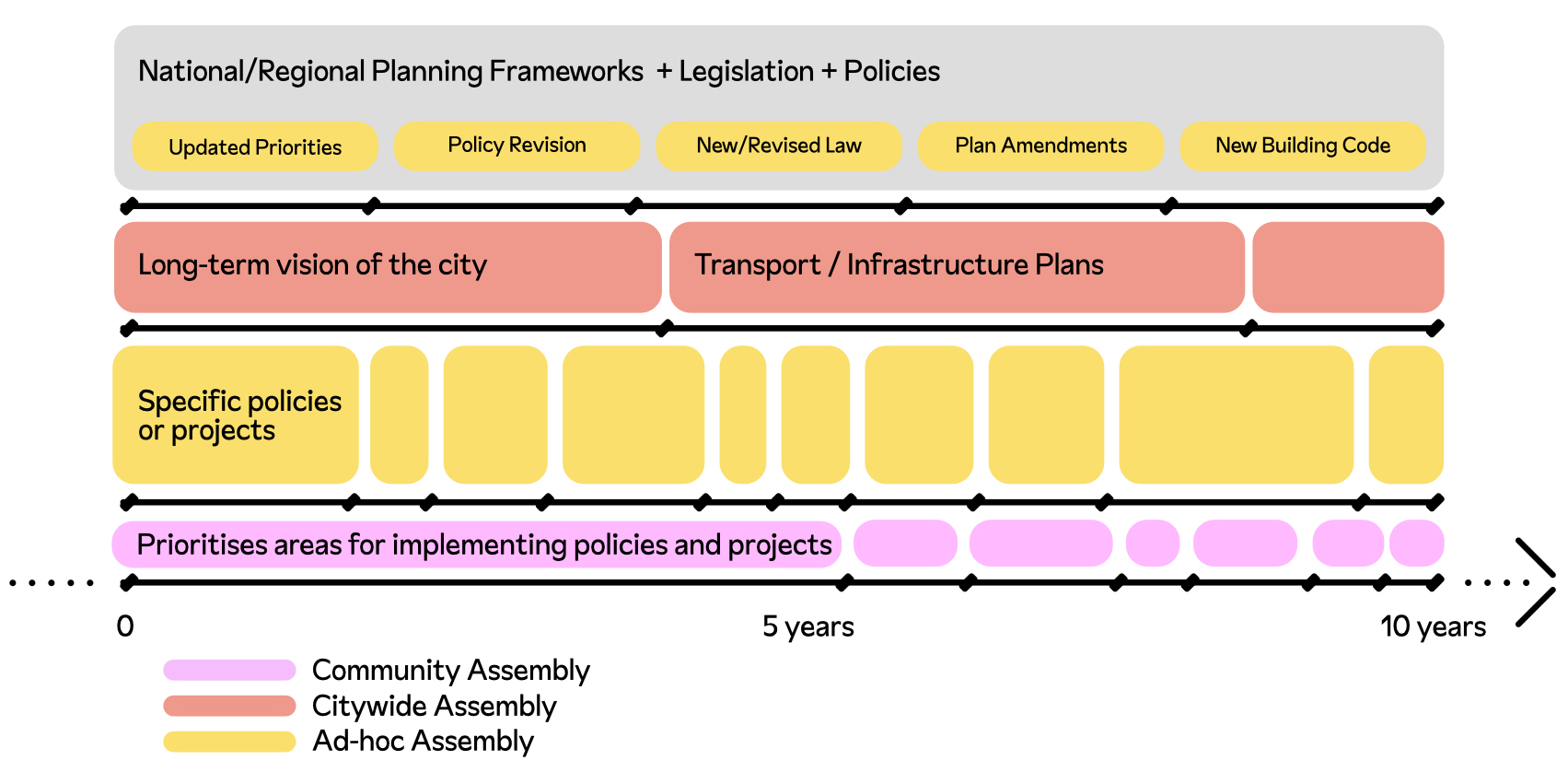
Why are we so focused on Citizens’ Assemblies? Why do they play a central role in these proposals? Below, we first list the general benefits of Citizens’ Assemblies followed by how these are specifically helpful in cities.
More detailed data and evidence on the benefits of Citizens’ Assemblies can be found in the OECD’s Catching the Deliberative Wave report.
For decades, Citizens’ Assemblies have been used to address a multitude of complex issues around the world, not least questions related to urban planning (the three most commonly tackled issues are related to the environment, urban planning, and strategic planning - examples are included section 4.4).
Benefits for public authorities
Benefits for developers and investors
Benefits for everyone
The Assembly types detailed above cannot sit alone and separate from existing (or potential) ways of engaging with the wider public. Assembly Members might represent the diversity of society but ultimately they are a small group of people. This is why Assemblies must be connected to a wider ecosystem of engagement strategies that can run in cooperation with, and feed directly into, the Assembly process as evidence for forming recommendations. These can include (but are not limited to):
These engagement strategies can take place before the Assembly process (as a way to determine the question - the remit - of the Assembly) or during it (as a form of evidence or testimony for Members to form recommendations), while others can happen afterwards as a way to present and discuss recommendations from the Assembly with the broader public for feedback before it goes to the public authority.
The specific kinds of wider engagement strategies to implement will ultimately depend on the context and existing mechanisms for participation in a given city, the design of the Assembly itself, and the impact of the challenge to be tackled (whether it has city-wide implications or not). Designing or selecting the best kinds of participation strategies would be done in partnership with local organisations working in participation and/or municipal departments for public engagement in order to determine exactly how Citizens’ Assemblies and the wider engagement strategies can work together. For more guidance on participation strategies more broadly, we recommend the OECD’s Guidelines to Citizen Participation.
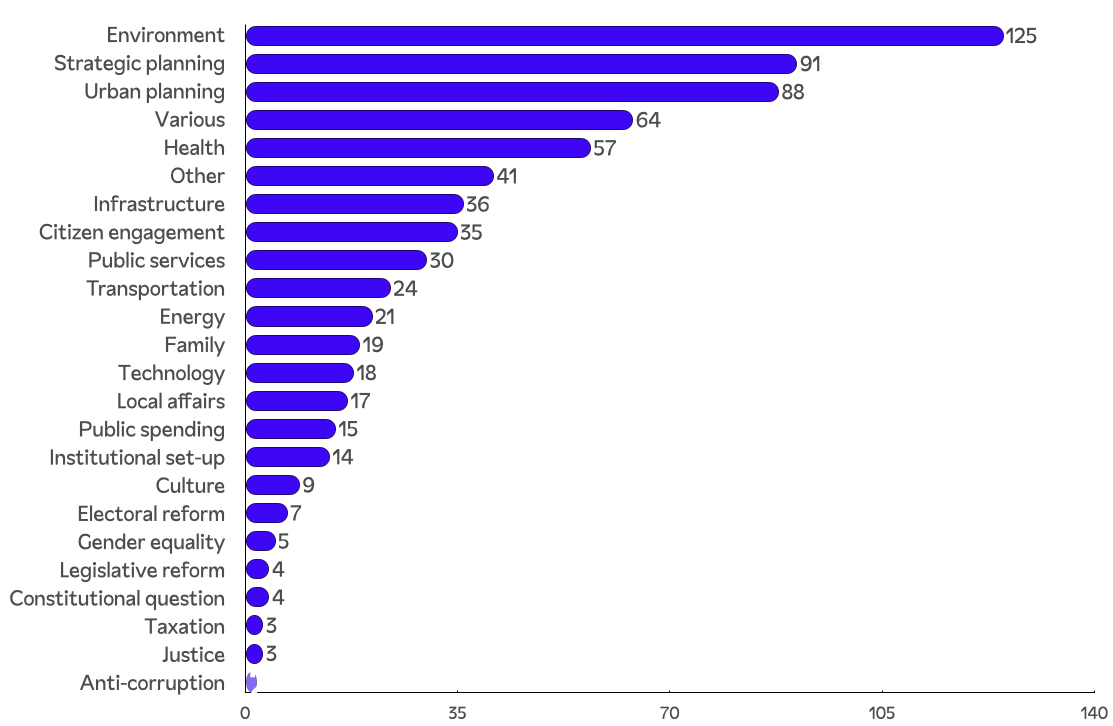
In the OECD’s database of around 700 Citizens’ Assemblies that have taken place in the past four decades around the world, the three most commonly tackled issues were related to the environment, urban planning, and strategic planning. Specific issues included climate change, infrastructure investment, long-term city plans, air pollution, mental health and well-being, amongst others. Some of the following examples are included in the OECD database, while others have taken place more recently.
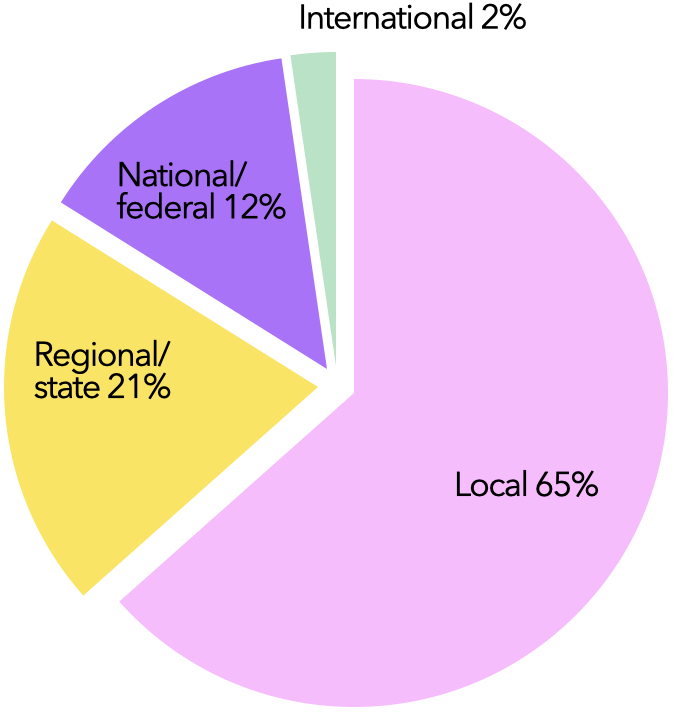
Citizens’ Assemblies have been used by various levels of government - 65% of which occur locally (OECD 2023). This is because local governments often address issues directly affecting people's daily lives, making it easier for citizens to participate and express their views compared to national issues. The lower costs of organising local Citizens’ Assemblies also contributes to higher participation. On the next page are some of the examples from different parts of the world.
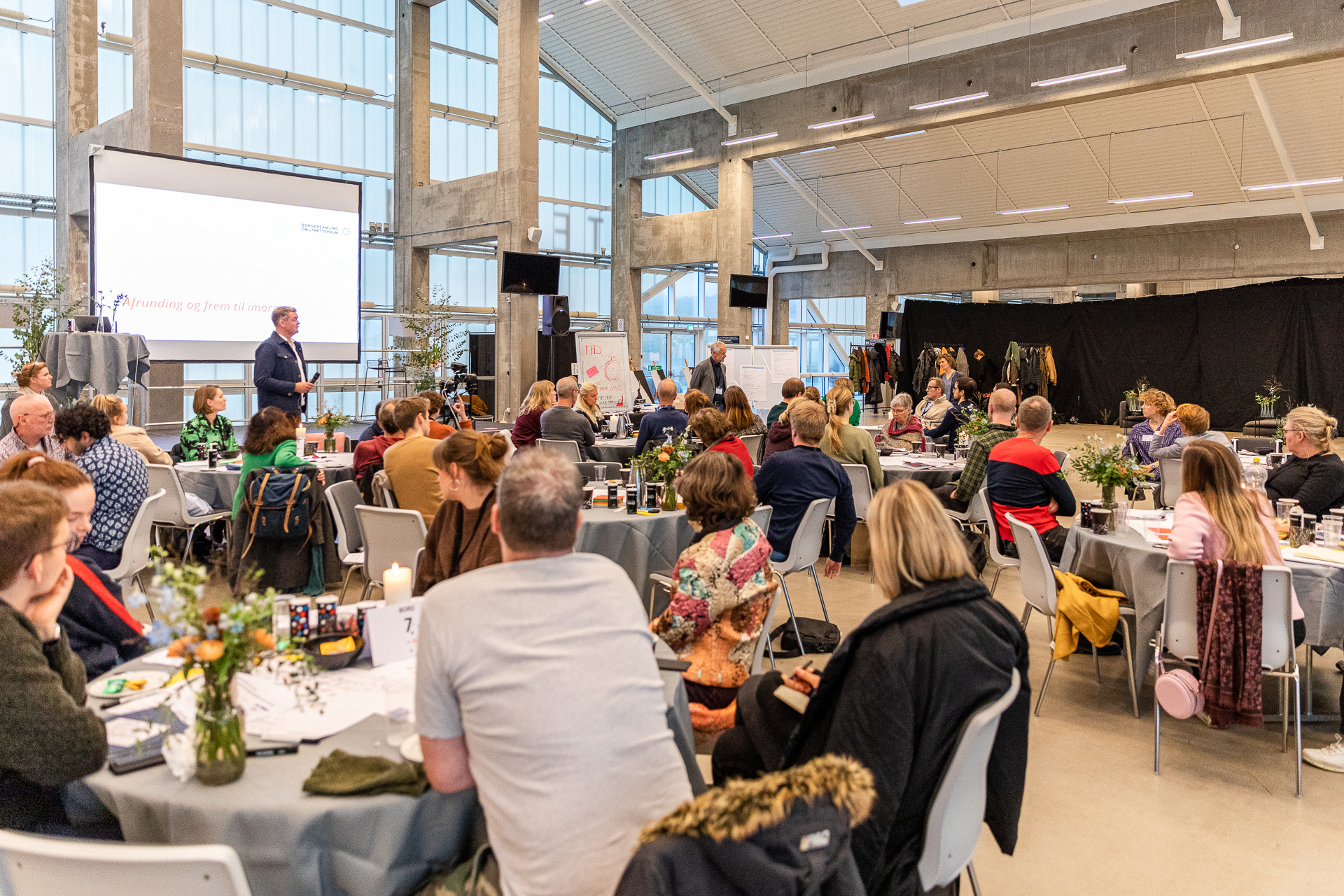
How can Lynetteholm become a district that supports sustainable development for people, nature and the environment in the capital area in the future?
Key facts
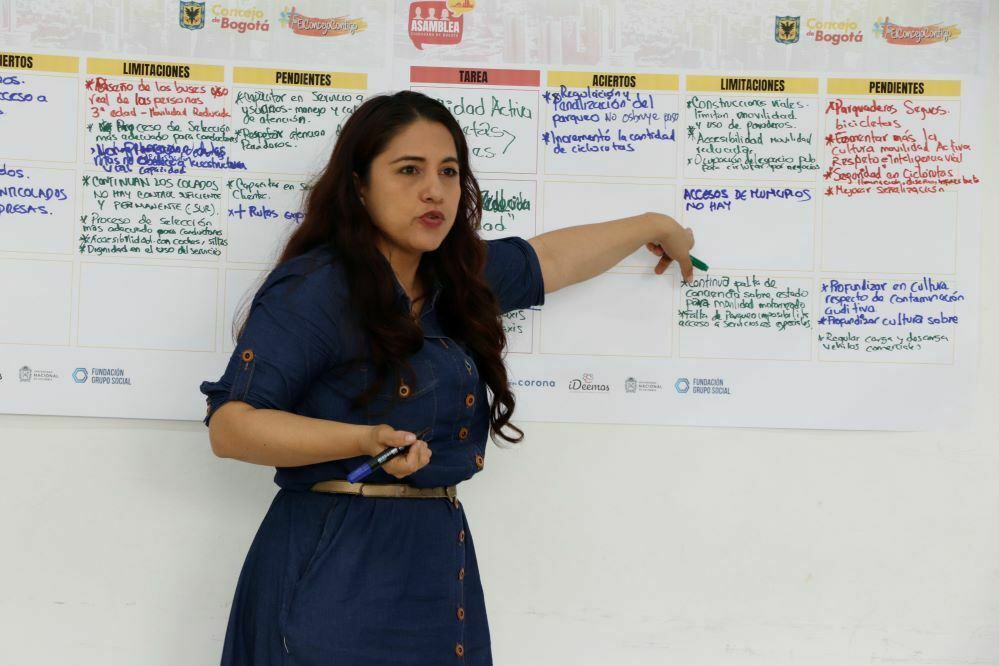
An ongoing model of citizen deliberation has been implemented for people to form recommendations on the land-use regulations and a vision of the city of Bogotá for the next twenty years.
Key facts
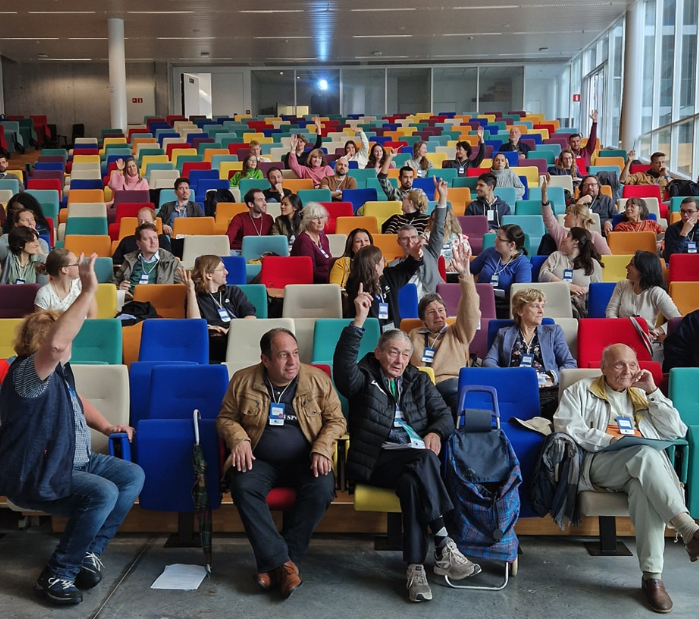
This permanent body for deliberation addresses the breadth of ongoing and increasing challenges related to climate change and is helping to close the gap between what citizens think is necessary and what the government does.
Key facts
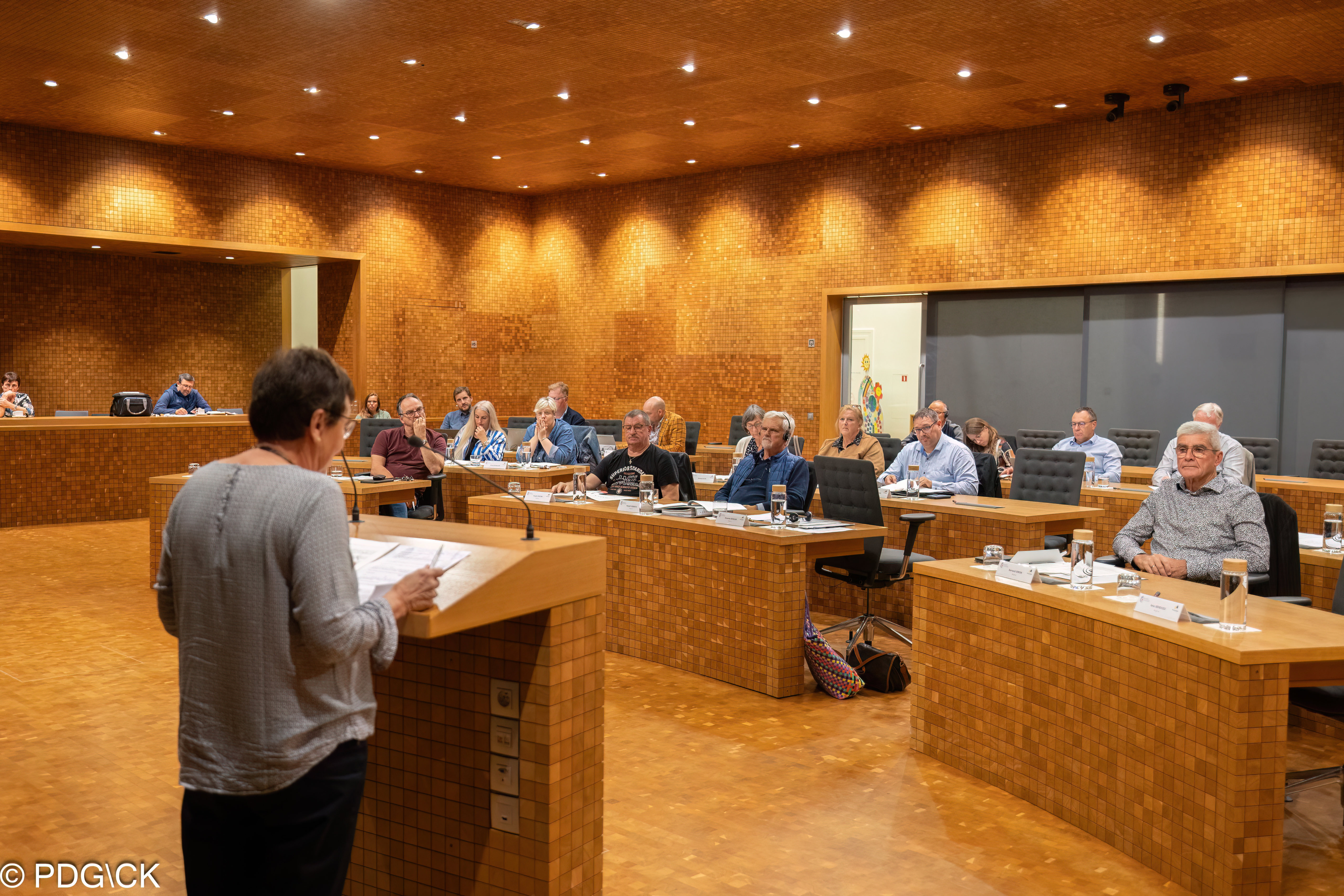
Housing for everyone! How can politicians create sustainable and affordable housing for everyone?
Key facts
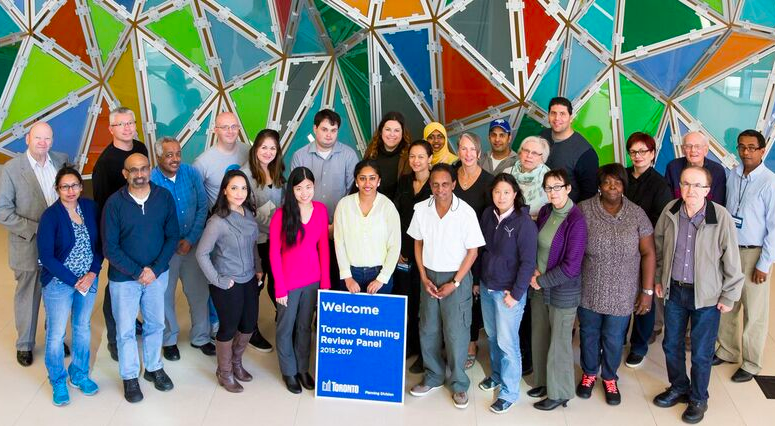
A standing body of citizens were given a two year mandate to regularly meet, deliberate, and form recommendations on a variety of different city-wide projects, policies, and guidelines.
Key facts
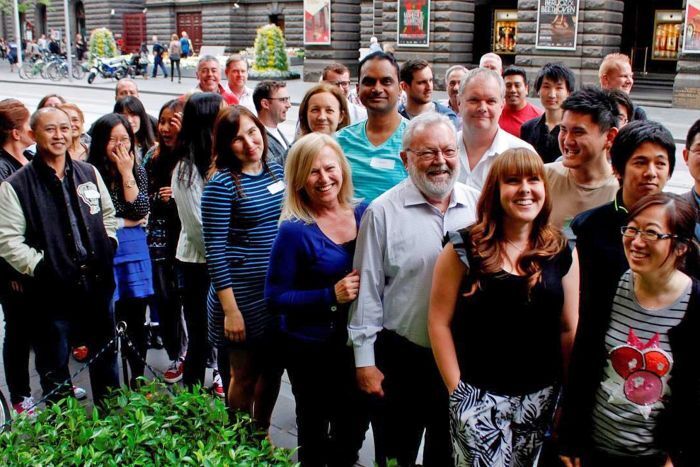
The City of Melbourne produced a $5 billion AUD 10 Year Financial Plan, which was considerably informed by the Melbourne People’s Panel which helped to close a $900 million AUD budget hole.
Key facts
In the table and section below, we have outlined 6 possible scenarios, showing how each Assembly type can be used to address a specific challenge in the urban planning system and we include key considerations for their implementation.
While some elements of urban planning decision processes are comparable in cities across the world, we recognise that there are differences from city to city. It’s why we have started from the premise of outlining several, general, ways forward that can then be adapted to a city’s institutional, political, socio-economic, and cultural context.
The table (available to download here) is organised by an increasing level of embeddedness (1-6) into existing decision-making processes. For example, in some cities it may make the most sense to begin with an ad-hoc Citizens’ Assembly for a specific major or contentious project or area of policy development to learn from the process and then reflect on how an ongoing Citizens’ Assembly might be a logical next step to find solutions to other persistent and challenging issues. In some cities, where Citizens’ Assemblies or other forms of deep engagement have already been tested and there is momentum to continue using them, a more ambitious approach to initiating an ongoing, City-wide Assembly model could be the next step.
If a city is interested in implementing more than one Assembly, it could consider taking a multi-layered approach that holistically connects each Assembly type and the recommendations they form to feed directly into different moments of decision making. This could mean that Ad-hoc Assemblies are initiated for specific projects, while ongoing Community Assemblies and a City--wide Citizens’ Assembly provide regular input into specific urban planning decision-making processes. As outlined above, these would be supported by a dedicated Engagement Committee and other knowledge-sharing mechanisms. There are several entry points and capacity levels to consider when initiating Citizens’ Assemblies.
The starting point for implementation can differ depending on numerous factors, including:
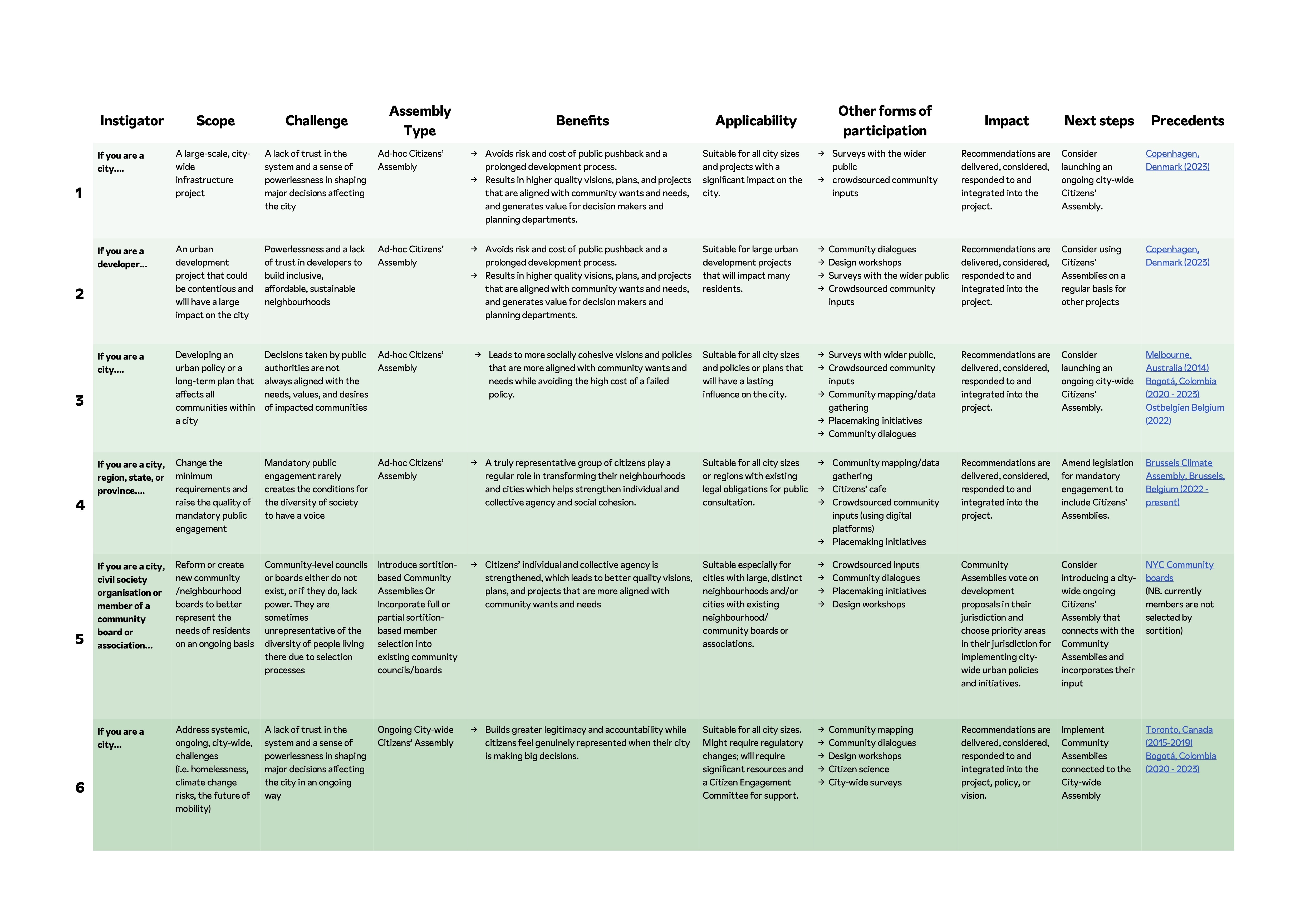
Consider implementing an ad-hoc Citizens’ Assembly to shape project objectives and key design goals that are more aligned with the community’s wants and needs.
Not only does this significantly reduce the risk of public pushback and criticism, it helps to avoid the high cost of a prolonged approvals process, and generates greater social and economic value and community buy-in for the project in the long-term. Usually, people are left out of (or minimally consulted on) the initial stages of major decision-making processes for large-scale, multi-generation infrastructure projects. By giving people the time, space, and resources to learn about, deliberate over, and reach broad consensus on key aspects of the proposal, it's possible to increase trust in the system and deliver a better project overall.
An ad-hoc Citizens’ Assembly implemented at the beginning of the decision-making process (possibly during the initial project phases involving feasibility studies, objective setting, or needs assessment) can help to shift the status-quo of typical public engagement for such developments. Of course, surveys with the public, crowdsourced community inputs (using online platforms like Decidim, change.org, make.org), or input from community dialogues must be used to include the wider public and to collect broader input which can be presented as evidence to the Assembly members to inform their final recommendations.
To ensure accountability and legitimacy, the recommendations should be publicly delivered to key decision makers, carefully considered, publicly responded to, and integrated into the project. Assembly members and the wider public must also be informed about how their specific input has shaped the decisions concerning the project, while a follow-up committee ensures that recommendations are being acted upon.
Evaluate the Assembly process and reflect on the lessons learned. Consider how implementing an ongoing City-wide Citizens’ Assembly might benefit other important developments in the future. By taking a systemic approach, it could be possible to tackle similar challenging decisions on a regular basis and gradually build greater public trust and understanding in the way we make decisions about our cities.
initiate an ad-hoc Citizens’ Assembly to generate higher quality, community-supported design strategies and site programming that, in turn, enable the creation of places where people can connect, live, and thrive.
Not only does this reduce the risk of public opposition to the project, it frontends a deeper, engaged, and informed process of public consultation which can help speed up the approvals process, while also generating greater social and economic value for the project in the long-term. Since people are usually left out of, or minimally consulted during, the initial stages of concept development and other major decision-making moments of large-scale urban redevelopment projects, it’s understandable that they often feel disempowered. By giving people the time, space, and resources to learn about, deliberate over, and reach broad consensus on key aspects of the project from the beginning, it is possible to build more inclusive, sustainable neighbourhoods, to increase public trust in developers, and secure greater buy-in for the project.
An ad-hoc Citizens’ Assembly initiated by a developer before design professionals have presented a full concept or the approvals process has begun, can help to shift the status-quo of typical public engagement for such developments. The Assembly Members can be tasked with forming the project’s sustainability goals, determining how it connects with the surrounding neighbourhood, recommending what kind of public services could be located there, or developing key design strategies for the project.
Placemaking initiatives, community dialogues, surveys with the public, crowdsourced community inputs (using online platforms like Decidim, change.org, make.org) must be used to include the wider public and collect broader input to be delivered as evidence to the Assembly Members to inform their recommendations.
A second stage of engagement could involve public design workshops with the broader community in collaboration with design professionals like architects, planners, and environmental consultants, to explore how the recommendations could be tangibly implemented. Technology like Fora could be leveraged to enable qualitative community inputs into the smaller, more representative Assembly process.
To ensure accountability and legitimacy, the recommendations should be publicly presented, carefully considered, publicly responded to, and integrated into the project brief. Bidding architects and other design professionals must indicate a commitment to upholding these recommendations in order to be awarded the contract. Assembly Members and the wider public must also be informed about how their specific input has shaped the decisions concerning the project, while a follow-up committee could ensure that recommendations are being acted upon.
Evaluate the Assembly to reflect on the lessons learned. Consider how using Citizens’ Assemblies on a regular basis for other large developments might benefit their success and reduce other risks. By using this model of engagement as a developer, it is possible to demonstrate what high quality public consultation looks like and how it positively impacts the project. Using Assemblies on a regular basis would also gradually build greater public trust, avoid the risk of prolonged approvals processes, and build more inclusive and sustainable neighbourhoods.
Consider initiating this process with an ad-hoc Citizens’ Assembly to develop a citizen-driven vision for the city, a multi-year budget, or a planning policy that is aligned with and reflects the needs, values, and desires of the city’s residents.
Consider initiating this process with an ad-hoc Citizens’ Assembly to develop a citizen-driven vision for the city, a multi-year budget, or a planning policy that is aligned with and reflects the needs, values, and desires of the city’s residents.
In this way, the Assembly process can enable the development of more socially cohesive visions, policies, and plans while avoiding the high cost of a failed policy, long-term, or financial plan that does not equitably benefit the city.
Running an ad-hoc Citizens’ Assembly at the beginning of these kinds of processes creates the conditions for a diverse set of perspectives, life experiences, and visions for the future to come together. The results are bolder, widely supported, ambitious plans for the future of the city. Crowdsourced community inputs (using online platforms like Decidim, change.org, make.org), surveys, and citizen science must be used to include the wider public and to collect broader input to be delivered as evidence to the Assembly members in order to inform their recommendations. These tools can also be used to present interim recommendations to the public in order to receive feedback before the Assembly Members deliver the final recommendations.
To ensure accountability and legitimacy, the recommendations should be publicly delivered to key decision makers, carefully considered, and publicly responded to. Assembly Members and the wider public must also be informed about how their specific input has shaped the decisions concerning the project, while a follow-up committee ensures that recommendations are being acted upon.
Evaluate the Assembly and reflect on the lessons learned to iterate the design for each cycle. Consider how implementing an ongoing city-wide Citizens’ Assembly might benefit the drafting of other important plans, visions, or budget questions. Perhaps a Citizens’ Assembly is convened on a regular basis to close budget holes or make amendments to the long-term plan or policy.
By taking a systemic approach, it could be possible to tackle similar challenging decisions in an ongoing way and gradually build greater knowledge and capacity amongst the population to tackle these complex challenges. This can also lead to an increase in public trust and a deeper understanding of the important trade offs involved in making decisions about our cities.
Commit to improving the quality of mandatory public engagement by implementing an ad-hoc Citizens’ Assembly for a significant urban development project.
This should be done with the intention to learn from the experience in order to consider changing legislation that mandates the minimum legal requirements for public consultation to include Citizens’ Assemblies. Current public consultation is often a one-off, ‘Town Hall’ style process (and in some cases a legal obligation) that often brings out what are often called “the usual suspects” who have the time and resources to participate and voice their concerns about a particular project or policy. These meetings are usually organised in such a way that people are informed but cannot meaningfully shape the project. They also rarely represent the diversity of perspectives from across the city.
When the legal obligation for public consultation exists, it often becomes an item to ‘tick off’ when seeking approval from the planning department. Projects are generally presented to the public and they are given a choice between a few design proposals. Feedback delivered in such forums are mostly top-of-mind opinions rather than consensus-driven, thoughtfully-considered recommendations. These meetings are not designed to be constructive, and often they are not a particularly effective way of garnering constructive community inputs; there is widespread frustration with these processes from city officials, planners, developers, and citizens alike.
Amending municipal or regional legislation to make Citizens’ Assemblies the go-to method (instead of relying on the typical Town Hall format of public participation) would fundamentally raise the bar of quality, impactful public consultation because:
After the process has finished, consider how changing the legislation that dictates the minimum legal requirements for public consultation to include Citizens’ Assemblies might have a positive impact on future projects across the city. This may only be for particular kinds of development projects (considering scale, budget, community impact etc), but can function as a higher quality method of engagement for challenges that need citizen input the most.
Consider changing how people are chosen to be part of the board or association by using sortition to select new Members.
This would be an alternative to membership based purely on self-selection or elections; those chosen through sortition would be broadly representative of the community, and rotated on a regular basis to ensure ongoing representation. Adopting this way of selecting members could help existing boards or associations better address the needs of the diversity of residents in their community on a regular basis.
Consider creating new sortition-based Community Assemblies to represent each district, borough, ward, or neighbourhood (depending on the size/configuration of the city).
These Assemblies would consist of rotating members, selected by sortition, and would be tasked to deliberate and form recommendations on specific key issues affecting their area. This means they would be responsible for choosing priority areas to implement city-wide urban policies and initiatives and could be tasked with voting on development proposals in their jurisdiction before final decision making goes to the public authority.
Community Assemblies should also work in tandem with wider public participation strategies. They can organise neighbourhood dialogues, surveys, and citizen data gathering, carry out local placemaking initiatives, or host design workshops with the public to garner feedback from the wider community. This can also help Community Assembly Members to identify key challenges and priority areas for action in their jurisdiction.
Changing the selection method for new Members in existing community bodies, or creating Community Assemblies would create the conditions for all community members to be better represented. This would help strengthen the individual and collective agency of people which can lead to better quality visions, plans, and projects for the city that are more aligned with community wants and needs.
To ensure accountability and legitimacy, there needs to be a clear, and continual, line of communication between the Community Assemblies and the public authority so that recommendations can be delivered to the right department. These should be carefully considered, publicly responded to, and integrated into projects, policies, or budgets (depending on the nature of the recommendations). Assembly Members and the wider public must also be informed about how their specific input has shaped the decisions concerning the project, while a follow-up committee ensures that recommendations are being acted upon. As a next step, consider introducing a city-wide ongoing Citizens’ Assembly that connects with the Community Assemblies and incorporates their input into recommendations with city-wide impact.
Consider implementing a City-wide Citizens’ Assembly that convenes on a regular basis to tackle ongoing, systemic, city-wide challenges by forming recommendations that shape key urban policies, the city’s long-term vision, amendments to this vision, and significant development projects.
This can include some key issues such as housing and affordability, homelessness, the city’s climate policies and adaptation measures, public mobility priorities, amongst others.
People are usually left out of major decision-making processes and are not meaningfully involved in shaping the city’s vision and longer-term plan, but implementing an Assembly that convenes regularly, and is directly connected to decision making in a systemic way, could help to change this. Not only would this give people greater agency, it can help generate recommendations that can regularly feed into a decision-making process, can increase trust in the system, and result in plans or policies that are in line with what people want.
To ensure accountability and legitimacy, recommendations should always be publicly delivered to key decision makers, carefully considered, and publicly responded to. Assembly members and the wider public must also be informed about how their specific input has shaped the decisions concerning the project, while a follow-up committee ensures that recommendations are being acted upon.
Surveys with the public, crowdsourced community inputs (using online platforms like Decidim, change.org, make.org), community dialogues, design workshops, citizen science, and community mapping exercises must be used to include the wider public and to regularly collect broader input to be delivered as evidence to the Assembly members to inform their recommendations.
As a next step, consider implementing sortition-based Community Assemblies as a way to connect to the City-wide Assembly and deepen resident representation on the community level.
The challenges of urban planning decision-making processes may differ greatly in their specifics from place to place, but many are shared in cities around the world. The actors involved, the interplay between national and local legislative and regulatory frameworks, and the stages of decision-making are sometimes quite similar. The scenarios proposed here are adaptable and can be contextualised to the particularities of a place.
We recognise that in all contexts, there is a tremendous value, and a necessity, to tap into the knowledge and expertise of a particular place in order to adapt these general proposals. There are certainly other scenarios beyond those that are outlined here which are rooted in circumstances or challenges that we have not yet considered, beyond the scope of the 100 people involved in shaping this work. While we were intentional in collaborating and seeking feedback from people on all continents, we are mindful that we only heard from people in around 30 countries. There are certainly other contexts, considerations, and situations that we have not necessarily thought about. However, we are keen to learn, and to understand how elements of this proposal could inform an approach in differing contexts.
There are two other important considerations to reflect on in all of the scenarios listed above. We see them as horizontal considerations because they have the potential to play a key role in all of the iterations outlined. One is a consideration of the physical spaces needed for Citizens’ Assemblies and the other is the necessity of including young people and children in the decisions we make about the future of our cities.
5.3.1 Spatial infrastructure
To accompany the systemic and procedural infrastructure for deeper and wider public engagement for urban planning, including Citizens’ Assemblies, it is important to consider the spaces in which they take place. This is crucial for enabling greater social cohesion in a community and across the city.
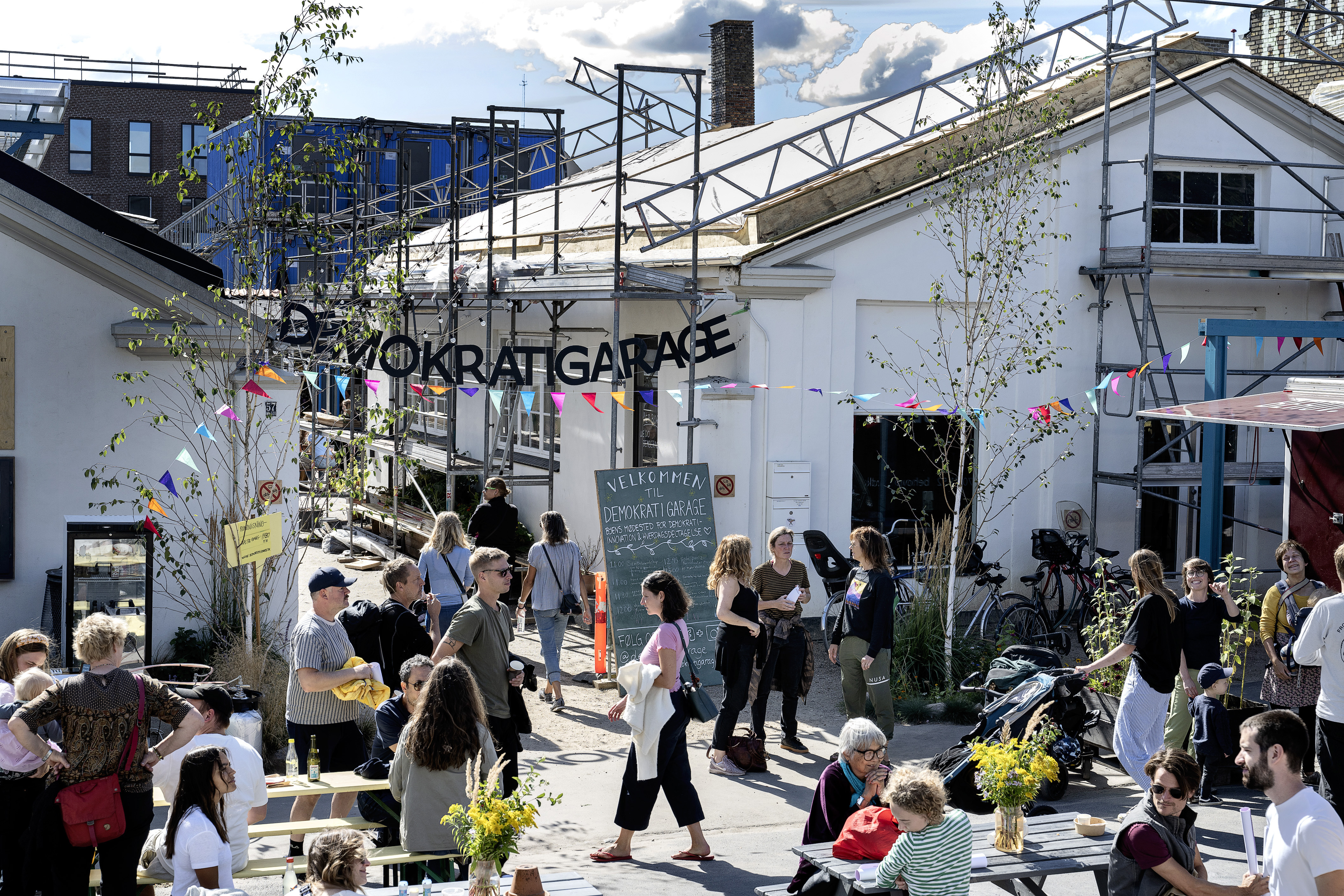
This can mean a number of things in terms of the spatial conditions necessary to accompany such a systemic shift. Existing community or neighbourhood organising spaces could host Community Assemblies, while the larger, less frequent, City-wide Assembly might take place in a more centralised, multi-functional community space in the city.
Many of the existing cases of Citizens’ Assemblies from around the world have taken place in the legislative chambers of local and national government buildings, in hotels, or conference centres, but there is an opportunity to reimagine and relocate where decisions about our cities are made. Current legislative spaces are not always conducive for Citizens’ Assemblies because they are not designed for deliberation. Instead, civic spaces could host Assemblies, and also connect to a wider ecosystem of community activities. Such changes could help us reconsider how and where we take important decisions about the future of our environment by placing power and decision making in closer proximity to the communities directly impacted by these decisions.
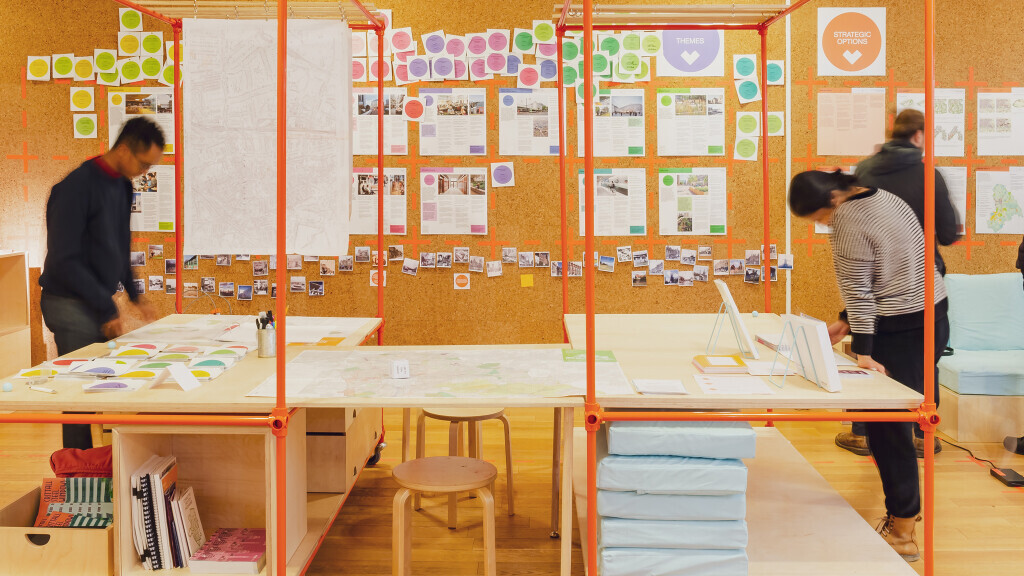
Below is a list of some inspiring examples that already exist, where people work together, convene for community gatherings, meet to run workshops, engage in dialogue, and come together to consider important questions about their cities or neighbourhoods.
If you know of any other inspiring examples like the ones above, please feel free to share them with us! Send them to james@demnext.org
5.3.2 Including young people
Another important consideration is the inclusion of young people (under 16 years of age) into the decision-making processes that will shape the future of our cities. The next generation of young people deserve, and have the capacity to imagine and help shape the places they will live in long after the current generation of decision-makers are gone.
Including young people in an Assembly process could be achieved in a number of ways. It could be that, through an adjacent process of engagement, they are asked to form recommendations on the same topic as the ‘adult Assembly’. These recommendations would then be brought to the adult Assembly as evidence to be considered for the final recommendations or directly to the public authority. They could also be presented to parliamentarians alongside the Citizens' Assemblies’ recommendations, with equal standing and merit.
There are examples where young people’s or Childrens’ Assemblies have been implemented during both Ireland and Scotland’s respective national Citizens’ Assemblies on climate. In both cases, children produced thoughtful, bold, and tangible recommendations.
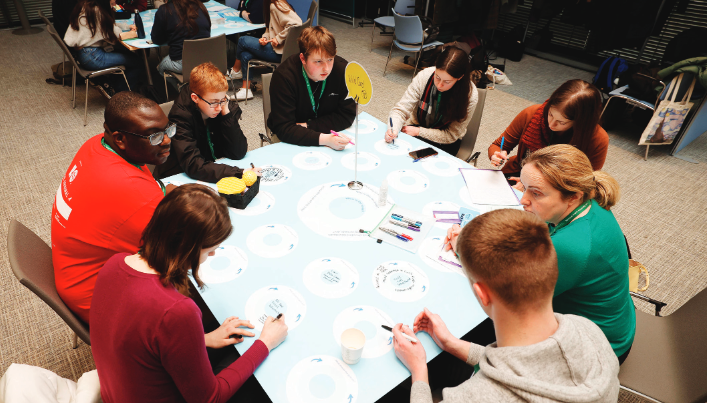
The following Good Practice Principles are outlined in DemocracyNext’s Assembling an Assembly Guide in section 1.1 - Conditions for Success as well as in the OECD’s Good Practice Principles for Deliberative Processes for Public Decision Making. We consider these principles as the minimum threshold for a deliberative process to be able to deliver the full benefits of a Citizens’ Assembly.
The OECD Good Practice Principles for running Citizens’ Assemblies have been developed based on the analysis of close to 300 examples of Assemblies, in collaboration with an advisory group of leading practitioners from government, civil society, and academia. When in doubt, refer to them as guidance as to what constitutes a high quality Citizens’ Assembly. They include:
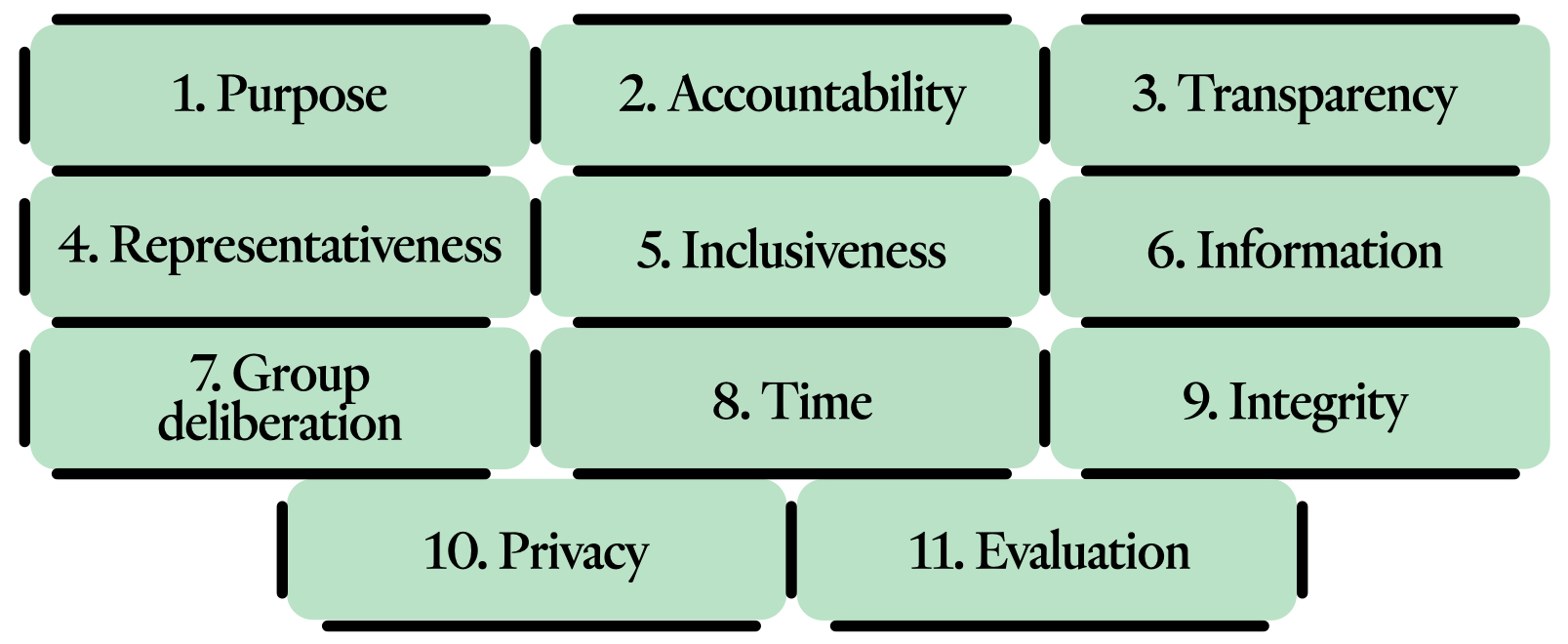
Getting buy-in from all relevant parties to experiment with Citizens’ Assemblies as a viable, legitimate, and worthwhile way to engage with the public is fundamental. It is important to secure cross-partisan support, and to work to obtain stakeholder buy-in.
Building capacity within municipal departments to be able to understand the value of and deliver an Assembly is a key element of ensuring success. It is equally important that recommendations can be efficiently incorporated into decision-making processes. As mentioned earlier, DemocracyNext will be launching a Citizens’ Assembly learning programme for civil servants and practitioners in late 2024/early 2025. Please let us know if you are interested in participating; we will notify you when this becomes available.
Finding and allocating the necessary financial resources for municipal departments, developers, or civil society organisations to initiate and deliver a Citizens’ Assembly is not always an easy task. Below are some examples that have taken place on a local level in different parts of the world with varying budgets. The size of budget required will naturally depend on the context, size, and length of the Assembly, but these numbers can begin to provide a rough idea. It’s important to note that a significant part of the budget goes into compensating Assembly Members for their time, and hiring skilled facilitators. Ongoing Assemblies reduce costs involved as they become a normal way public decisions are taken, familiar to instigators, organisers, facilitators, and citizens..
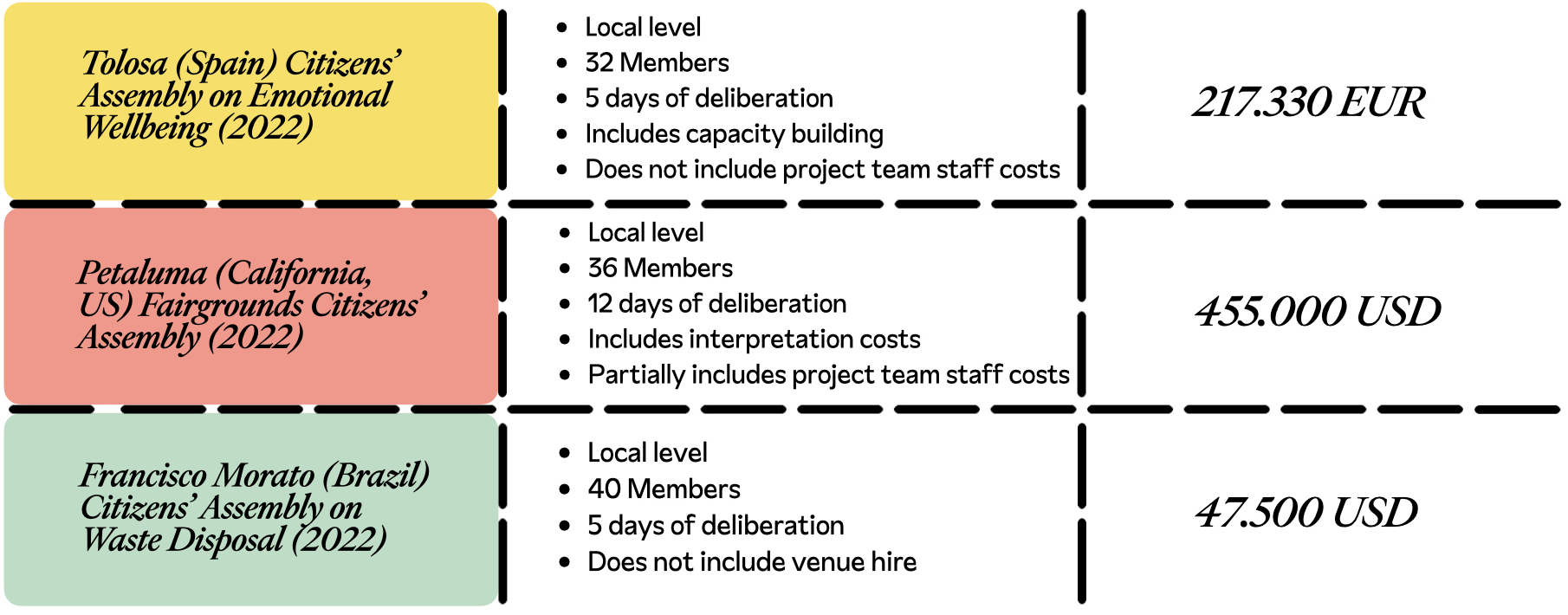
We have laid out why and how making these systemic changes to the governance of urban planning decisions can help enable thriving and healthy cities. There are clear benefits to improving collaboration across the entire ecosystem of actors, as well as a huge opportunity to re-establish the status quo of participation.
There are already numerous places around the world doing this by experimenting with the ideas behind, and practices of, sortition and deliberation in order to engage with citizens both broadly and deeply. They show us that step by step, deep and transformative systemic change is possible. There is a need to start somewhere, and it’s why we have laid out six different entry points that, taken together, add up to an ambitious vision of a completely different system for urban planning decision making.
From the experience of designing and implementing Citizens’ Assemblies in different parts of the world, we have witnessed a shift in how decision makers value such processes and increase their trust in citizens, as they present thoughtful, bold, and consensus-driven solutions to some of the toughest challenges. We have also witnessed how citizens increase their trust in government, as they understand the complexity and trade-offs involved in making hard choices.
This is why we want to enable more experimentation and encourage a greater commitment to systemic shifts that embed Citizens’ Assemblies as a regular part of decision-making cycles. Only by creating deliberative spaces and providing the time and resources for people to be part of an Assembly process can we begin to make this shift more impactful.
We need to tap into the collective wisdom of the people who inhabit cities, who are experts and stakeholders in their own communities, and who bring a diversity of perspectives to the challenges cities are facing. We strongly believe people can, and should, regularly play a role in decision-making processes that affect their everyday lives, in a democratic and systemic way.
As a next step, DemocracyNext is seeking to partner with a cohort of three cities, which we will select through an open application process beginning in February 2024. Once we have established these partnerships, we will advise, and co-design with officials from each of these cities to explore and establish what is possible in their context. This will include a consideration of how specific elements of these proposals, including which kind of Assembly type and entry point is most suitable. We will also need to account for important elements such as the existing legal and regulatory frameworks for planning decisions, the city’s size and jurisdictional powers, the existing culture of public engagement, and available resources to carry out such a process.
However, this is an ongoing project. For interested cities that are not part of the first cohort in 2024, but who would like to stay updated on their progress in order to learn from these experiences, it will be possible to do so. There will also be opportunities to partner with us in the future to expand this work. Learning from one another, understanding what works, and what doesn’t, is an essential part of cultivating thriving and healthy cities with empowered citizens across the world.
Progress will be shared regularly via our website, social media platforms, and regular newsletter. If you are interested in exploring how these ideas can apply in your own city, don’t hesitate to reach out - we’d love to hear from you.
Nairobi - Kenya - 2017-Present
Task Force Member involved: Jane Weru
The Akiba Mashinani Trust (AMT) and its partners have been involved in the Mukuru Special Planning Area (SPA) project in Nairobi, Kenya since 2017. The project was initiated in response to eviction notices faced by the community members of Mukuru due to the improper zoning of the land they were inhabiting. AMT, in collaboration with various organisations, worked to stop the evictions and conducted research to understand the living conditions and power structures in Mukuru. This led to the initiation of a planning process to develop infrastructure and formalise the community, which took two years to persuade the county government to begin. The community was extensively involved in the research and planning phases through community meetings, radio shows, and consultation meetings.
The participation process involved the mobilisation of 41 civil society organisations, which divided the planning process into 8 planning consortiums, each focusing on a specific sector such as water, sanitation, energy, housing, and education. Residents were asked to participate in the consultation process and provide feedback on the analyzed sectors. The community members were also involved in preparing plans for each consortium and an integrated plan for the entire settlement through approximately 200 community planning forums.
Key stakeholders involved in the project included the Nairobi county government, various universities, the Kenyan federation of slum dwellers (Muungano), and the International Development Research Centre. The direct impact of the project was significant, as Mukuru was designated as a 'Special Planning Area,' which allowed for alternative planning solutions to meet the unique needs of the community. The planning process resulted in the development of 6 sector plans and the Mukuru Integrated Strategic Urban Development Plan (ISUDP). Infrastructure such as roads, electrical, sewage, and water facilities have been installed, and three hospitals and one secondary school have been developed.
The project is an ongoing, multi-year process that is still in development. The after-effects of the process have been far-reaching, with the SPA designation being viewed as a successful and necessary component of slum upgrading projects. The methodology used in Mukuru has also garnered interest in other informal settlements, both within and outside of Kenya.
The project has showcased a rare, precedent-setting opportunity for participatory upgrading partnerships at scale and has led to genuine co-planning between the community and various organizations. The SPA approach has also garnered interest from other large slum settlements in Kenya, such as Kibera and Mathare.
Related Material
Mexico City - Mexico - 2016-2018
Task Force Member involved: Gabriella Gómez-Mont
In 2016, Mexico City embarked on the groundbreaking initiative of "Crowdsourcing a Constitution," aimed at reshaping the city's governance and addressing long-standing tensions between citizens and their government. This was initiated by the Mexico City Government and led by Mayor Miguel Angel Mancera, with active involvement from various government agencies, including the Mayor's Office, the Attorney General's Office, and Laboratorio para la Ciudad (LabCDMX). Gabriella Gomez-Mont, the former Chief Creative Officer of Mexico City and founder of LabCDMX, played a pivotal role in this transformative process.
The project was a response to decades of the city's limited autonomy within the federal government, which left citizens without a participatory mechanism in decision-making. In 2016, a constitutional amendment granted greater autonomy to Mexico City, paving the way for crowdsourcing the city's constitution. The initiative involved a diverse group of 28 "notables", which included individuals from various backgrounds, tasked with drafting the initial constitution. To counterbalance the disproportionately right-leaning representation in the national government, LabCDMX facilitated the participation of Mexico City residents in shaping the constitution, thus initiating the crowdsourcing process.
The engagement process comprised four key stages: collaboration, surveys, online petitions, and citizen assemblies. Citizens were encouraged to voice their opinions on city challenges, aspirations, and future visions, with 31,000 residents across 1,000 neighbourhoods participating. LabCDMX also created platforms for civil society to interact with the Drafting Group and gathered feedback. Citizens were allowed to form their own meetings and discussions on topics of their choice, with over 100 groups addressing issues such as mobility and indigenous rights. The input gathered from these various sources informed the drafting of the new constitution, which came into effect as the Carta Magna on January 30, 2017, with 84 percent of crowdsourced recommendations incorporated. The constitution now enshrines diverse rights and principles, including those related to the LGBTI community, transparency, disability rights, environmental conservation, and more, reflecting the direct impact of this groundbreaking work on the city's governance and the lives of its residents.
This ambitious crowdsourcing project not only transformed Mexico City's constitutional framework but also empowered its citizens to actively participate in shaping the policies and principles that govern their lives. It stands as a remarkable example of innovative and inclusive governance that has inspired positive change and bridged the gap between government and the people.
Related Material
Place de Ninove, Brussels - Belgium - 2015 - 2018
Task Force Member involved: Diego Luna Quintanilla
The project "Aux Arbres Citoyens" was part of the "Contrat de Quartier Durable Jardin aux Fleurs" in Brussels, Belgium, which took place from 2014 to 2016. This initiative was a part of the "Neighbourhood Contracts" used by the City of Brussels and was located at Place de Ninove. It was initiated by the Regional Government of Brussels in collaboration with municipal governments within Brussels. The project aimed to develop a sustainable neighbourhood contract, which is a planning and financial tool that enables funds from the regional government to be invested on a neighbourhood scale, addressing disparities between different socio-economic positions of the municipalities.
The specific project "Aux Arbres Citoyens" involved a €54K fund to green the neighbourhood and streets together with citizens, comprising 31 small projects. One of the activities was to update and activate Place de Ninove, a public square in the neighbourhood. Participants were asked to make a physical intervention in the square and were involved in co-creation and construction workshops to identify challenges and ideal solutions for the space. The key stakeholders included neighbourhood residents, the core team integrated by Cakri/The Urban Ecology Center, and a group of neighbours called Adoptninop.
The participation process began from the very beginning and was used to create awareness about a larger project. The physical intervention resulted in a colourful composition of wooden platforms, urban furniture, seating, and a community garden. Socially, it allowed participants to exchange experiences and knowledge, leading to continued collaboration as a community organisation. The temporary intervention exceeded its expected duration, and the square has since been fully renovated, serving as a catalyst for neighbours to come together and collaborate as a community organisation.
Additionally, the "Aux Arbres Citoyens" project not only led to the physical and social transformation of Place de Ninove but also served as a model for community engagement and sustainable urban development in other neighbourhoods. Its success demonstrated the potential for active citizen participation in shaping their local environment and fostering a sense of ownership and community pride.
Related Material
Villaverde District, Madrid - Spain - 2017-2019
Task Force Member involved: Elisa De Los Reyes García López
Crear Villaverde was a ambitious public participatory architecture and urbanism initiative that took plac in the Villaverde District of Madrid from 2017 to 2019. The project was commissioned by the Junta Municipal de Villaverde's Participatory Service Office through a public tender, as part of a city-wide effort during the Carmena government to embed citizen participation into the fabric of local governance. The initiative aimed to reinvent and adapt public facilities to the evolving needs of the community, ensuring that public spaces were designed with direct input from the people who use them.
There was a call for tenders for the Villaverde Participation Service (SPV), which included four areas: Strategic Participation, Promotion of Associations, Participatory Design and Communication. The "Crear Villaverde" project sought to improve neighbourhoods and buildings, foster collaborative spaces, and initiate a renewed dialogue between the administration and citizens, emphasising transparency, learning, and connection with the local context and entities.
The Pezestudio team, along with urban sociologists, were responsible for incorporating citizen participation across a range of urban projects, including the design of a new library, a civic centre, auditorium, community garden, and park.
Citizens were invited to participate from the outset, contributing to sessions that gathered insights on the desired uses and design of the facilities and spaces. This collaborative approach allowed for the collection of ideas and prototypes, which were then synthesised into reports for the technical professionals tasked with the actual development of the projects. The participatory process was inclusive, engaging local residents, expert architects, civil servants, and active civil society groups. Despite initial challenges in mobilizing citizen involvement, a variety of outreach strategies were employed, such as emails, flyers, posters, and direct calls, leading to an average participation of 20 to 30 people per session.
The tangible outcomes of "Crear Villaverde" were comprehensive reports that guided the technical development of the projects. These reports were integrated into the terms and conditions of architectural competitions or used for internal development, with all findings published on a municipal website, although the specific URL provided is not accessible. The project also allowed for continued citizen input after the announcement of competition winners, ensuring that the community had a voice in the final stages of design. While the Villaverde Participation Service was discontinued following a change in government, the documentation of the processes remains available, serving as a valuable resource for replicating successful participatory practices in other districts and cities.
Related Material
New York City - USA - 2017-2023
Task Force Member involved: Ifeoma Ebo
The project was initiated by the Mayor’s Office of Criminal Justice as part of the Mayor's Action Plan (MAP) for Neighbourhood Safety. It aimed to transform the public realm across 15 public housing sites in New York City, which were identified as high-crime areas.
Instead of adopting a traditional law-enforcement approach, the Mayor’s office sought to understand the root causes of crime in these communities through a community-engaged process. The goal was to create a public realm strategy that addressed these root causes and activated the sites to make them safer and more usable for residents.
The engagement process involved working with resident teams from each of the public housing sites. The first year focused on capacity building, training the community on human-centred design, placemaking, fundraising, and community organizing. The aim was to make the project sustainable and empower residents to continue the work after the program ended. Residents were asked to identify spaces to activate and key stakeholders to work with. Each team was given $50,000 to develop and steward these ideas. Once they developed an action plan, it was presented to the relevant municipal department representatives for feedback and advice. The residents then began to implement their projects, starting with events to generate interest, followed by surveys, design work with local university students, and continued programming and participatory evaluations.
Key stakeholders involved in the project included the Mayor’s Office of Criminal Justice, relevant municipal departments, and resident teams. People were asked to participate throughout the life of the project. The project had a direct impact, with agencies initiating a number of pilot projects to address crime and social cohesion based on the work done in this project.
While the initial public space activation is complete and physical design interventions have been implemented, the work to build capacity in the community is ongoing. However, the number of core community members committed to the project has diminished over time, and the initiative was discontinued with the election of a new mayor in January 2023.
Related Material
East Scarborough, Toronto - Canada - 2008 - 2014
Task Force Member involved: Zahra Ibrahim
This was a community design initiative that took place from approximately 2008 to 2014 in East Scarborough, Toronto, Canada. The project was initiated by the local community in collaboration with Zahra Ebrahim, Sustainable.TO, and the East Scarborough Storefront, with the impetus coming from a need to close out remaining funds provided by the City of Toronto and the Province of Ontario. The project was part of a policy and investment imperative at the local and provincial levels of government to address gun violence in underinvested neighbourhoods
The specific engagement process involved a capacity-building effort to empower the community to articulate their needs and understand the portfolio of professionals required to support them. The architectural firm Sustainable.TO and architecture think tank archiTEXT worked with local youth and design professionals to revitalise a former police station into a community facility. The community developed a Master Plan for the building and site, created a 7-phase approach to bring the plan to life, applied for a zoning amendment, carried out a full renovation of the building, and oversaw the construction of a bioswale and sports pad in the former parking lot of the police station
Key stakeholders involved in the project included the East Scarborough community, East Scarborough Storefront, Sustainable.TO, archiTEXT, and the City of Toronto. The project had a direct impact, with the former police station being converted into an entirely new community space, featuring meeting rooms, and a community kitchen. The success of the project inspired larger, more long-term physical improvements in the neighbourhood. It is now designated a Tower Neighbourhood Renewal site by the municipal government, which empowers residents to improve a local apartment tower through community-led design. The project also informed the Storefront’s Connected Community Approach for advancing place-based community and economic development in Toronto’s Neighbourhood Improvement Areas and other communities.
Related Material
Reading, Cardiff, Edinburgh, Belfast - United Kingdom - July 2021 - December 2023
Task Force Member involved: Flora Samuel
The "Community Consultation For Quality Of Life (CCQoL) - Urban Rooms" project is a major research initiative funded by the Arts and Humanities Research Council. The project, which began in July 2021 has been carried out in four cities across the United Kingdom: Reading, Cardiff, Edinburgh, and Belfast. The initiative is a collaboration with the universities of Reading, Edinburgh, Cardiff, and Ulster, and aims to develop a new, map-based model of community engagement that takes place both online and face-to-face across the UK. The project gathers data and engages in conversation about what does and doesn’t work in planning consultation and its current challenges. The overall aim is to allow people to input into digital maps so that the impact of changes to their neighbourhoods can be measured and assessed. The project also seeks to promote the use of maps and open data for democratic decision-making in planning, widen participation to tackle climate change and social justice issues, and develop best practice guidelines for community consultation and engagement. Each pilot focuses on a theme developed in response to its unique context and community.
The specific engagement process involves the setup of Urban Rooms in each city, which serve as places for organisers to get together with individuals, groups, and organisations to involve local people in decision making about their area. The Urban Rooms host digital mapping exercises where residents help create maps of their area to identify aspects important to their health and wellbeing. The project invites residents to participate in a range of different community activities centred around themes such as health and wellbeing, housing, green places, and young voices.
The key stakeholders involved in the project include local advisory groups composed of residents, community organisers, urban planners, and representatives from local authorities, arts, wellbeing, education, housing, and civic societies. Other stakeholders include various community organizations, housing associations, environmental organizations, planning departments, and youth services.
The project has already had a direct impact in Cardiff where continued engagement following on from the experimental room led to a series of workshops with Cardiff City Planners on ways to improve engagement in a multicultural area like Grangetown. The Cardiff Chief Planner has committed to producing a ‘Place Plan’ with Grangetown residents, a document that will ensure that the community voice is strong in any future developments of the area.
Related Material
How to cite this paper:
MacDonald-Nelson, James, Claudia Chwalisz, Ieva Cesnulaityte, and Lucy Reid (2024), “Six ways to democratise city planning: Enabling thriving and healthy cities”, DemocracyNext.
